
London Underground stations are listed here in alphabetical order. The name of the station is followed by the years when the station was opened for traffic and the years when the station was renamed or significant reconstructions took place. This may be followed by the station's former name(s). In the next line, I briefly explain the origin of the name (if it is a very old language, the word is put between apostrophes instead of quotation marks). Below that, the most important attractions that are close to that station may be listed. A green tick marks peculiar things related to the station itself.
Quick links: A B C D E F G H I J K L M N O P Q R S T U V W X Y Z
But first, a little about the names of the Underground lines. Please note that each line also has its own distinctive colour, which is also used in the interior design of the train. If you think you got on the District Line train, but you find yourself holding on to the yellow handrail, you know immediately that you have the wrong train.

The oldest of the lines. Opened in 1863 by a company called the Metropolitan Railway Company. The word "metropolis" of course comes from Greek...

At first, it was called the Metropolitan District Railway, but it got its current name to avoid confusion with the previous one.

At first this line formed a circle, but later it was expanded and changed. Round-wheel trains created some traffic management problems.

The line connected a place called Hammersmith to the city centre. The line has now been extended to Barking, but the name has remained.

Was once the only line into central London. This is no longer the case, but the name remains.

When the line opened in 1906 it was called the Great Northern, Piccadilly & Brompton Railway. Of course, such a long name was difficult to pronounce, so it was shortened. Besides, Piccadilly is probably the most important place for a tourist on this line.

Connects Baker Street and Waterloo stations. That's how the name is derived: BAKER+waterLOO.

The line was created by the merger of two companies. There were big plans to expand to the north, but these remained plans. As a special curiosity, there is a station on the line called Morden, which is London's most southerly tube station.

The line is one of London's newest and passes through Victoria railway station, named of course after the Queen.

According to the jubilee of the Queen's reign.

The shortest line in London, connecting only two stations, named after these. The City station is now called Bank, but the name of the line was not changed.
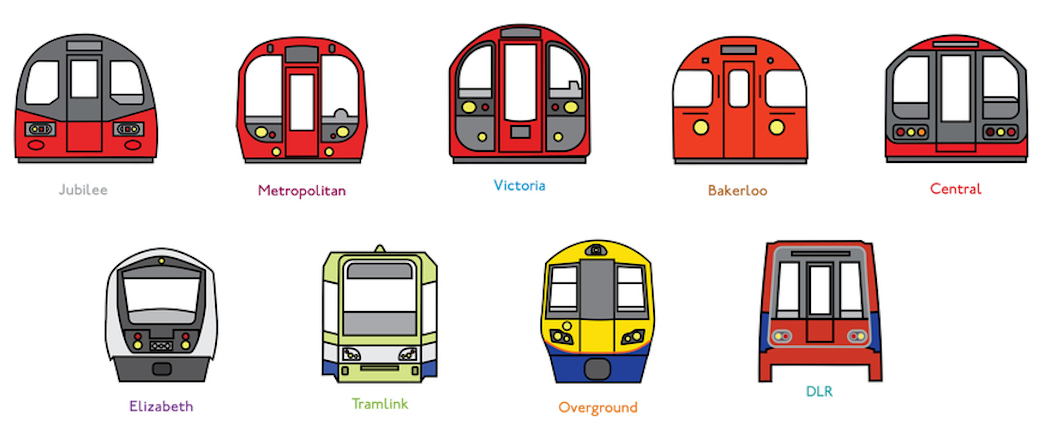
Six tube stations are named after nearby pubs: The Angel, Swiss Cottage, Elephant & Castle, Manor House, Royal Oak and Maida Vale.
Many of London's underground stations have been designed by two men:
G Leslie Green
H Charles Holden
Green died young and managed to design "only" 22 stations. Holden completed 48. Half of Green's stations are of dark red stone with a distinctive colour and large arched windows above the entrance. That's why they say: If it is red, it's green.
Unfortunately, many stations have either been destroyed in the war, demolished or are no longer in use. Some stations don't even have an above ground section. And some have been heavily rebuilt. But these station buildings can still be seen quite a lot if you walk around. That is why these authors are marked with colored circles at the stations. At some stations both have done something, there are two signs.
Acton Town 1879 -> 1910 Mill Hill H
1879 -> 1910 Mill Hill H
Aldgate 1876
Named after the former city gate (1761).
Aldgate East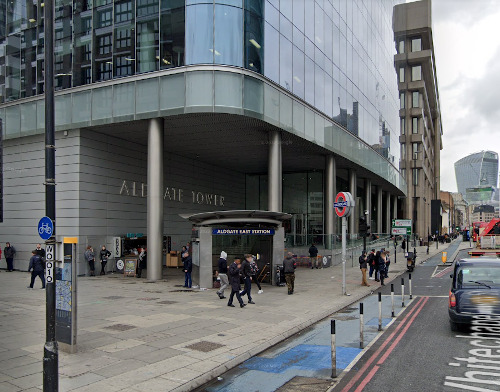 1884 -> 1938
1884 -> 1938
According to City Gate
Alperton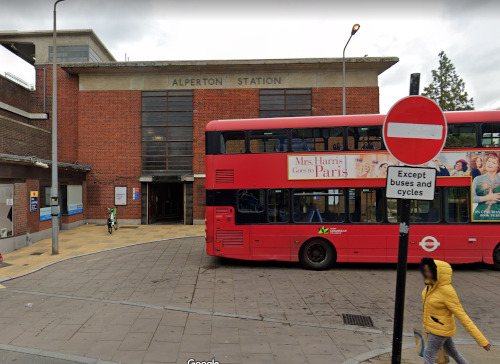 1903 -> 1910 Perivale-AlpertonH
1903 -> 1910 Perivale-AlpertonH
>
By the Ealhbert family farm
Amersham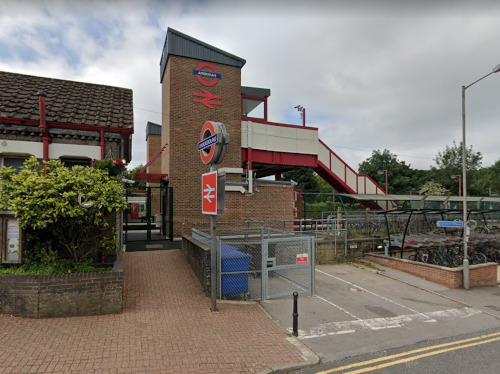 1892 -> 1922 -> 1934 Amersham & Chesham
1892 -> 1922 -> 1934 Amersham & Chesham
Surname Ealgmund
Angel 1901 -> 1992
1901 -> 1992
After the name of the old tavern
Archway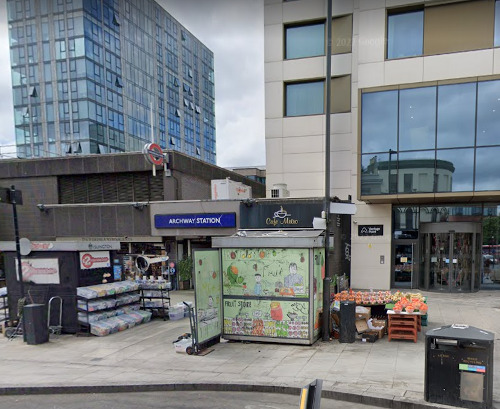 1907 -> 1939 Archway Tavern H
1907 -> 1939 Archway Tavern H
By tunnel and viaduct
Arnos Grove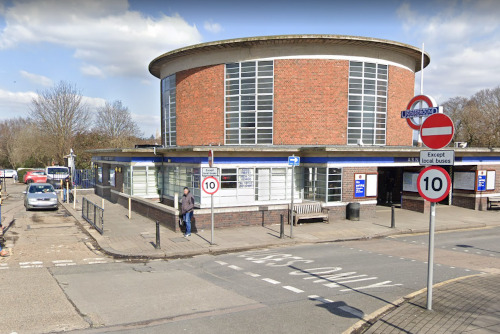 1932 Bowes RoadH
1932 Bowes RoadH
Family Margery Arnold
Arsenal 1906 -> 1932 Gillespie RoadG
1906 -> 1932 Gillespie RoadG
According to Football Club
Baker Street 1863 -> 1868 - 1906
1863 -> 1868 - 1906
Sir Edward Baker owned properties in this area
Balham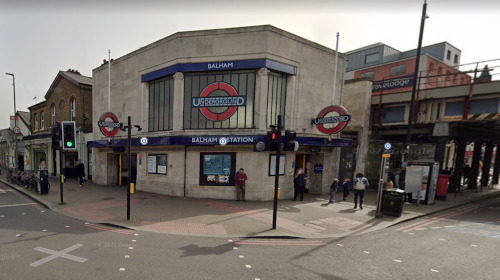 1926H
1926H
Named after the person Baelga meaning "Baelga's home"
Bank 1898 -> 1940 City
1898 -> 1940 City
Bank of England
Barbican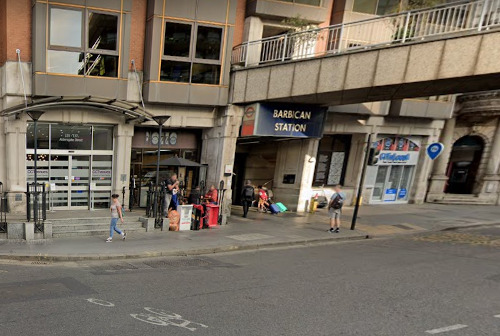 1865 -> 1923 -> 1968 Aldersgate Street, Aldersgate & Barbican
1865 -> 1923 -> 1968 Aldersgate Street, Aldersgate & Barbican
The name comes from Persian via Latin and means fortification or watchtower
Barking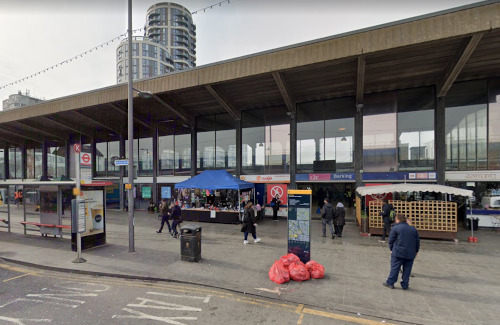 1902
1902
Home of Barc or Beringer, by names of persons
Barkingside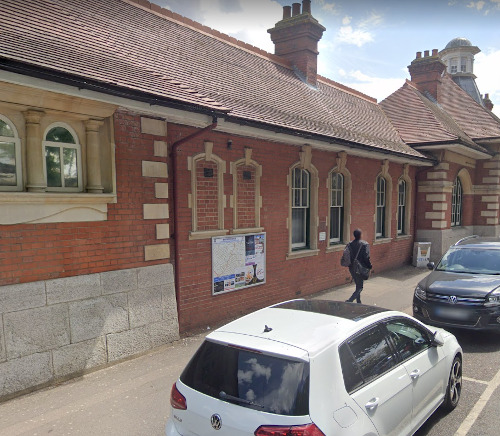 1903 -> 1948
1903 -> 1948
>
Place called Barking is near
Barons Court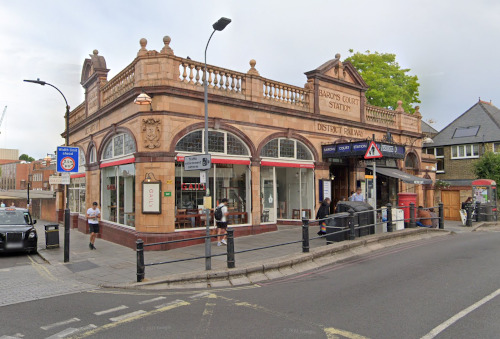 1905
1905
The name comes from a nearby property and obviously imitates the nearby Earl's Court.
Battersea Power Station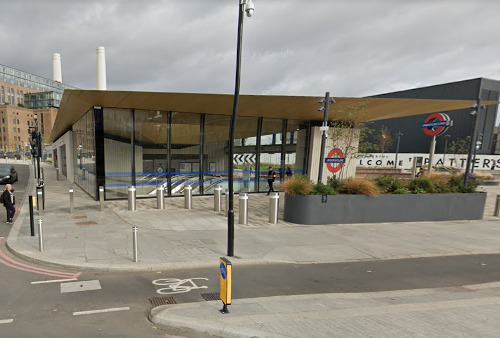 2021
2021
After the power station designed by Sir Giles Gilbert Scott
Bayswater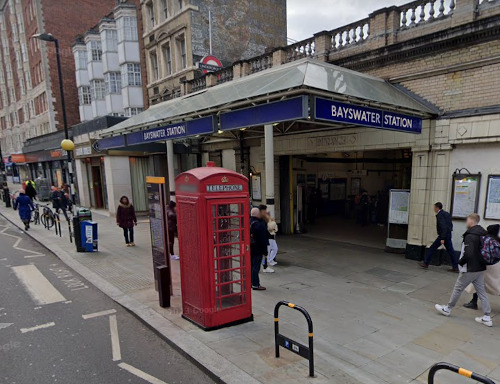 1868 -> 1922 -> 1933 Bayswater & Westbourne Grove
1868 -> 1922 -> 1933 Bayswater & Westbourne Grove
Where the Brook Westbourne crossed the road
Becontree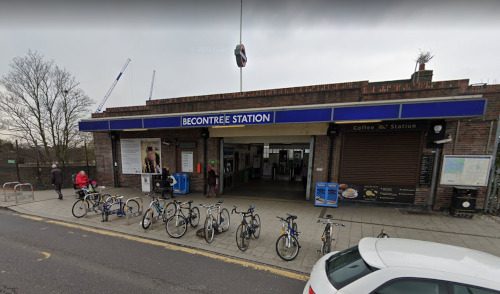 1932 Gale Street
1932 Gale Street
A tribe called the Beohha once lived here and the tree was a boundary marker
Belsize Park 1907G
1907G
From the Old French expression 'Bel asis' meaning beautifully laid out
Bermondsey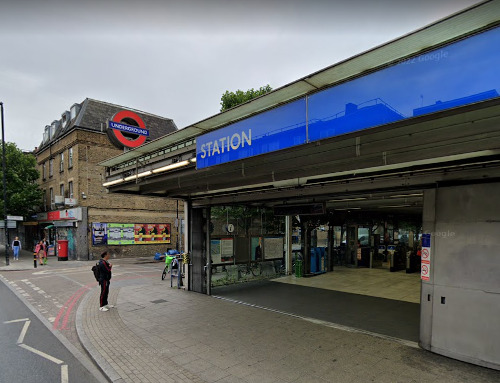 1999
1999
Here lived a man called Beormund and his family
Bethnal Green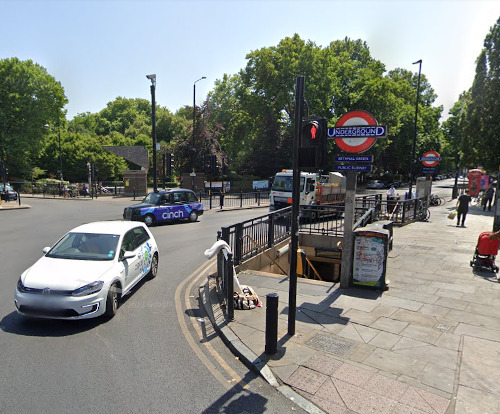 1946
1946
Either from the surname Blida or from the stream Bythe
Blackfriars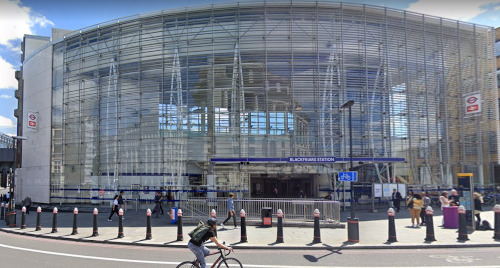 1870
1870
By Dominican monks
Blackhorse Road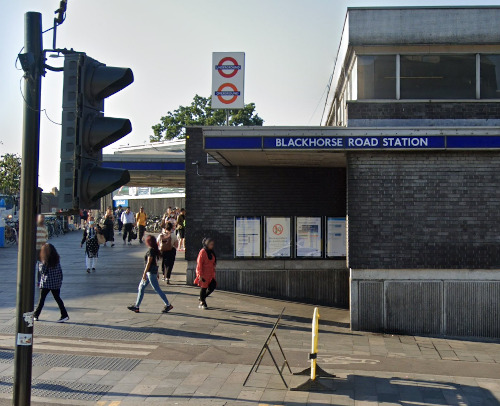 1968
1968
By building called Black House
Bond Street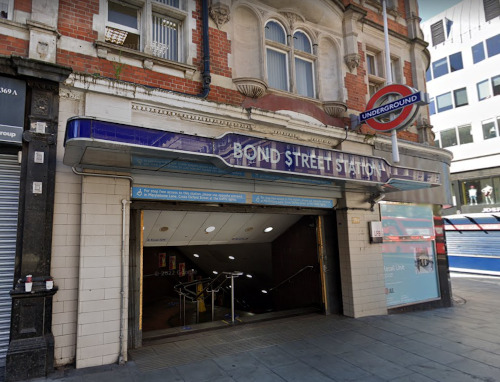 1900 H
1900 H
After the street designed by Sir Thomas Bond
Borough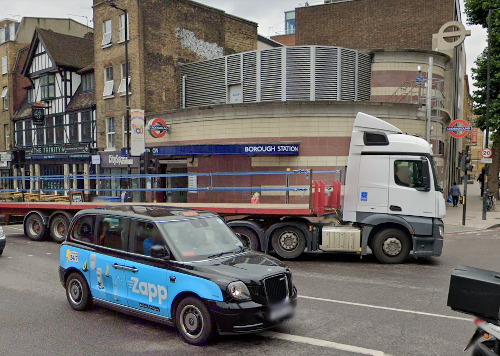 1890
1890
This word originally denoted a fortified place
Boston Manor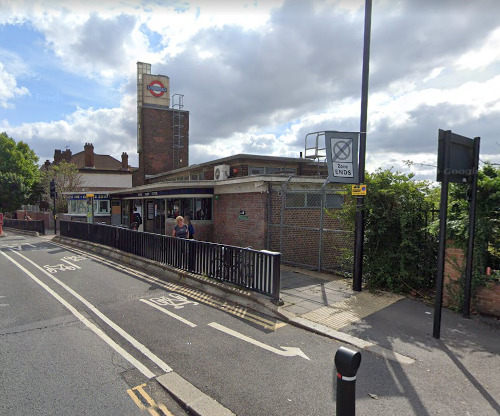 1883 -> 1911 -> 1934 Boston Road H
1883 -> 1911 -> 1934 Boston Road H
Surname Bords

Bounds Green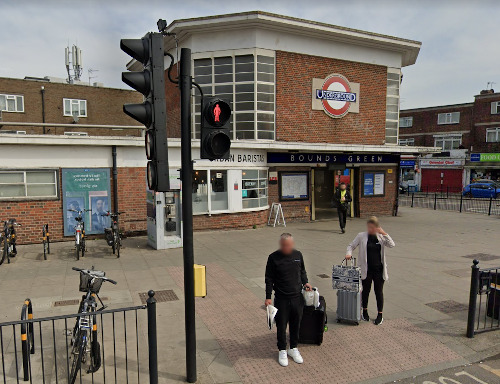 1932 H
1932 H
By John le Bonde and Walter le Bounde
Bow Road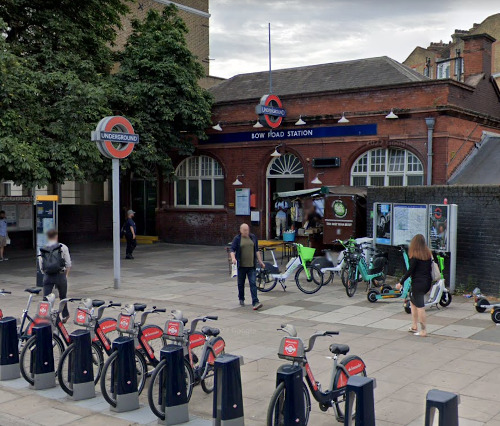 1902
1902
Curved street
Brent Cross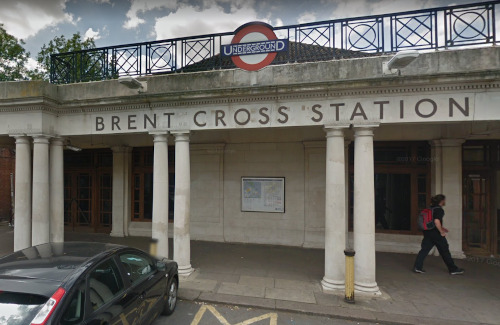 1923 -> 1976 Brent
1923 -> 1976 Brent
After a river that flows nearby
Brixton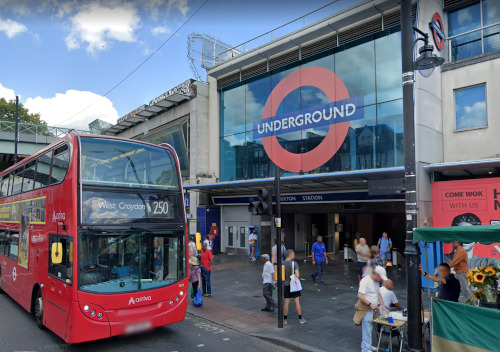 1971
1971
From the name Beorthtric and the word 'stane' (stone)
Bromley-by-Bow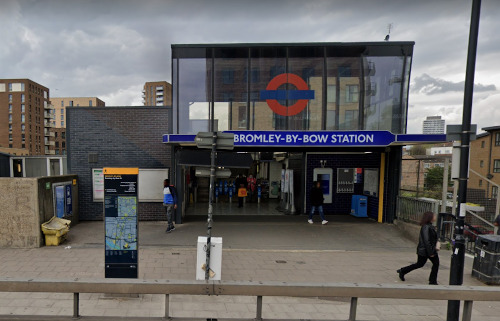 1902 -> 1968
1902 -> 1968
Old English 'broome' meaning tree
Buckhurst Hill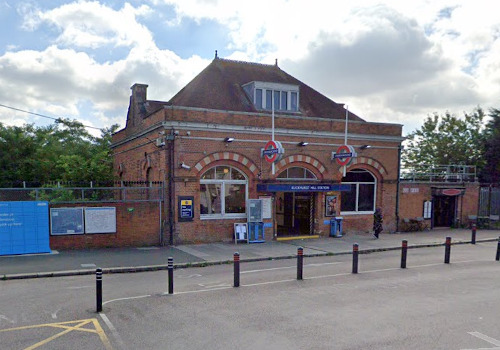 1948
1948
Again Old English word for a tree
Burnt Oak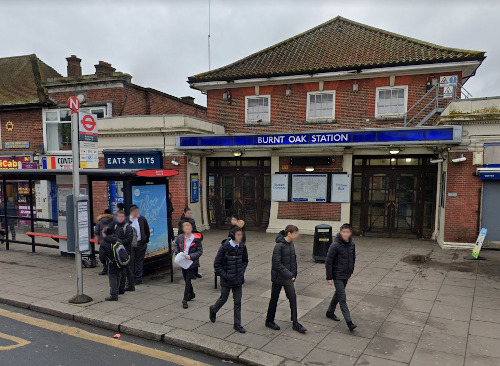 1924
1924
Burnt oak was once a boundary marker
Caledonia Road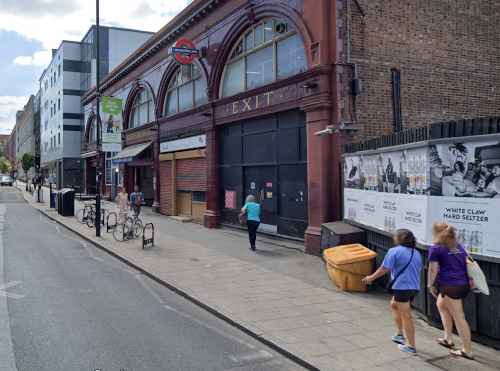 1908 G
1908 G
Named after a nearby children's shelter
Camden Town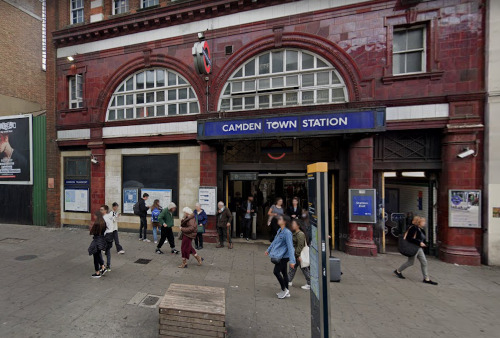 1907 G
1907 G
The Earl of Camden (Kent) established a residential area here
Canada Water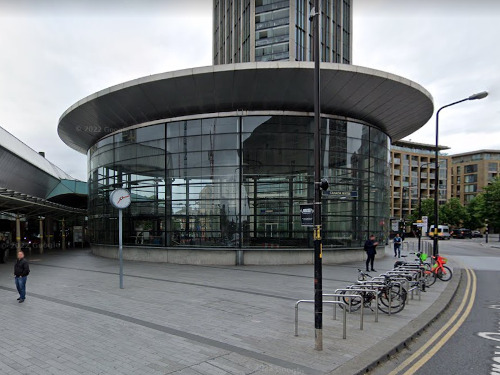 1999
1999
There used to be Canada Docks here, probably goods were brought from there
Canary Wharf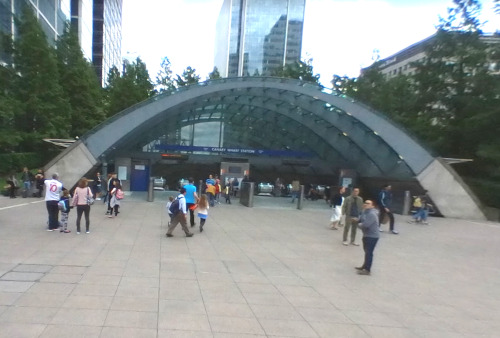 1999
1999
Fruit Lines Limited once built warehouses here for fruit imported from the Canary Islands and the Mediterranean
Canning Town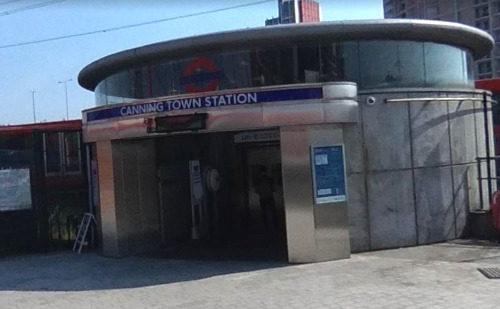 1999
1999
It has been assumed that the name comes from the former Governor General of India, but it is probably the name of a company located here
Cannon Street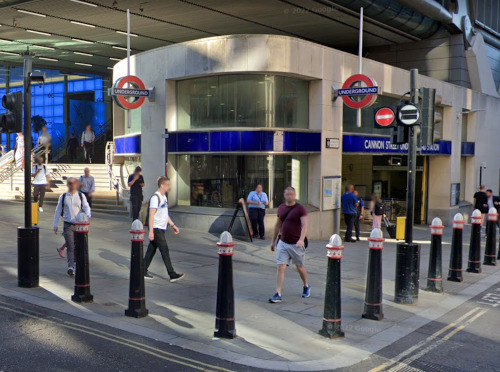 1884
1884
This name isn't about cannons or canons, it's a distortion of Candlemakers Street
Canons Park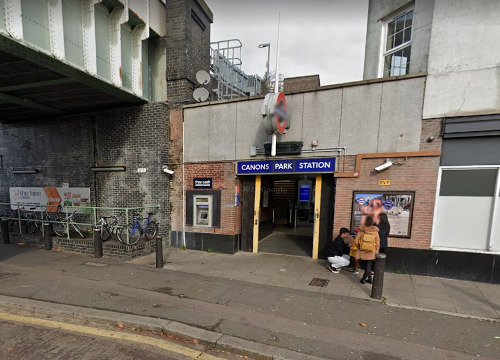 1932
1932
St. Augustine canons had land here
Chalfont & Latimer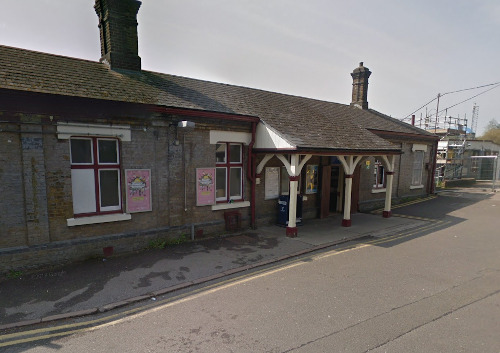 1889 -> 1915
1889 -> 1915
According to two men who lived in the 13th century
Chalk Farm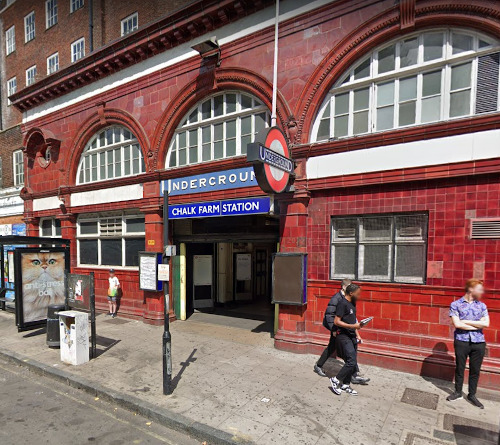 1907 G
1907 G
It has been suggested that this is a corruption of Chalcot Farm, but it has not been proven that there was one
Chancery Lane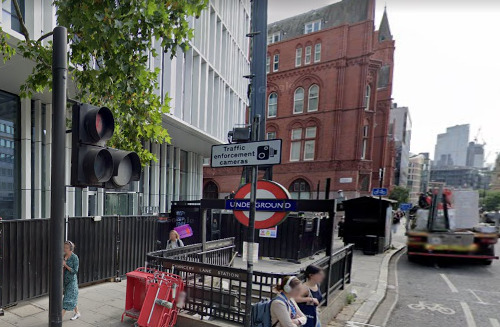 1934
1934
Probably a corruption of Chancellor's Lane
Charing Cross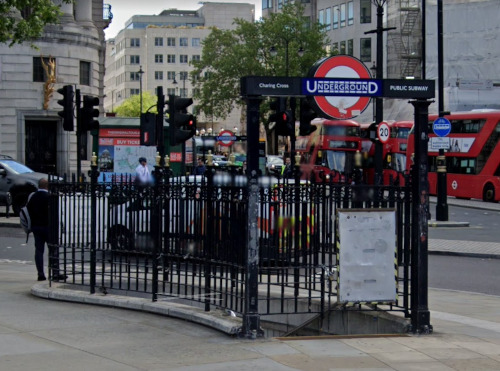 1907 -> 1914 -> 1973 -> 1979 G
1907 -> 1914 -> 1973 -> 1979 G
A memorial cross to Queen Elanor once stood here (above the equestrian statue of the King Charles I), 'Charing' meaning river bend
Chesham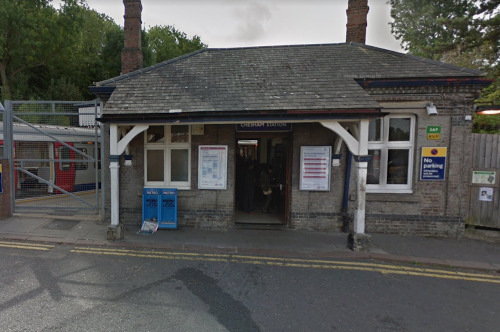 1889
1889
'Ceaster' once meant a fortress tower for the Romans
Chigwell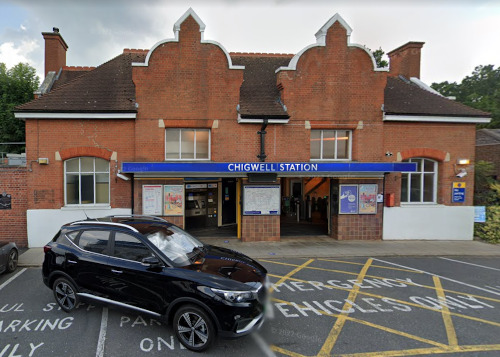 1948
1948
The name is thought to be from the Old English word 'ceaege' which meant a bush
Chiswick Park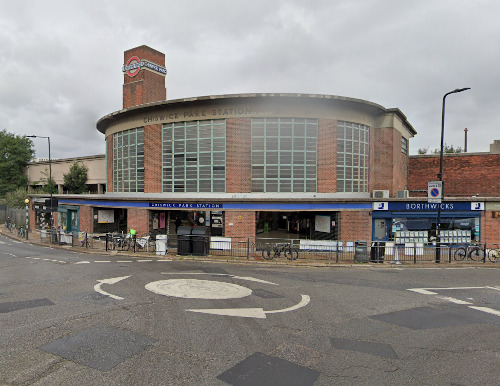 1979 -> 1887 -> 1910 Acton Green H
1979 -> 1887 -> 1910 Acton Green H
From Old English 'cese' and 'wic' meaning cheese and farm
Chorleywood 1889
1889
Son of the Wild - 'ceorl'
Clapham Common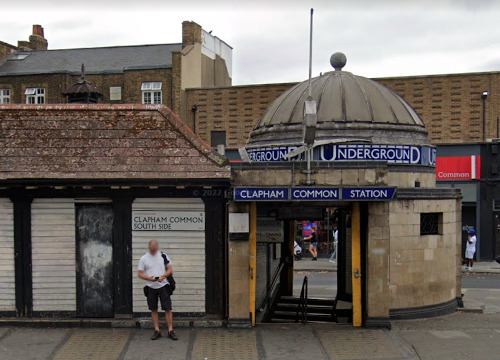 1900 H
1900 H
From 'clap' and 'ham' (hill and home)
Clapham North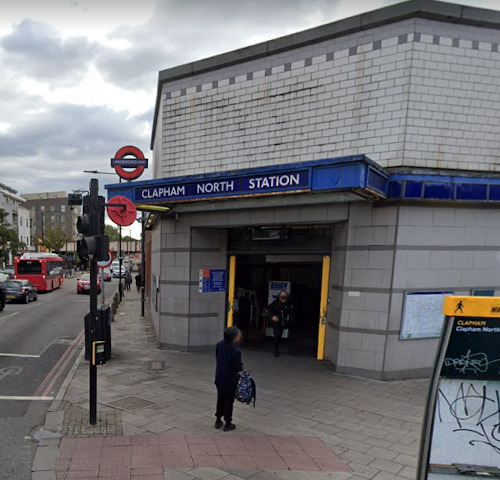 1900 - 1926 Clapham Road
1900 - 1926 Clapham Road
See previous
Clapham South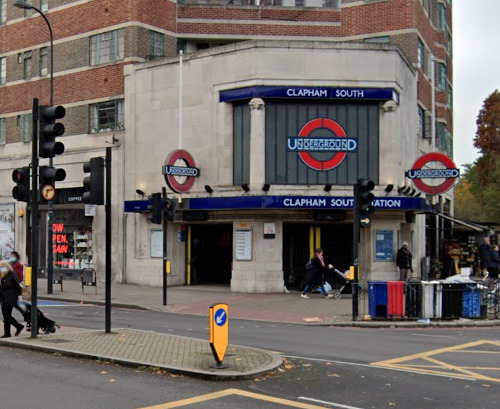 1926 H
1926 H
The same
Cockfosters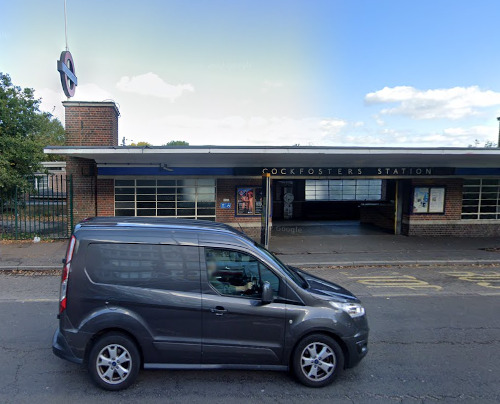 1933
1933
Derived from 'chief forester'
Colindale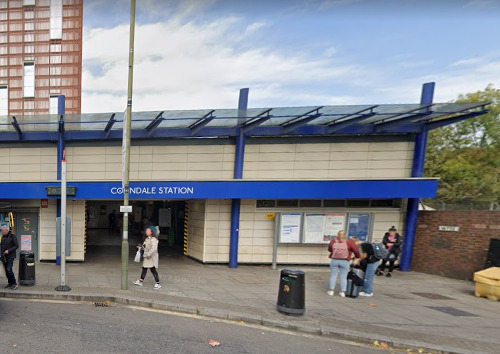 1924
1924
By the family of John Collin
Colliers Wood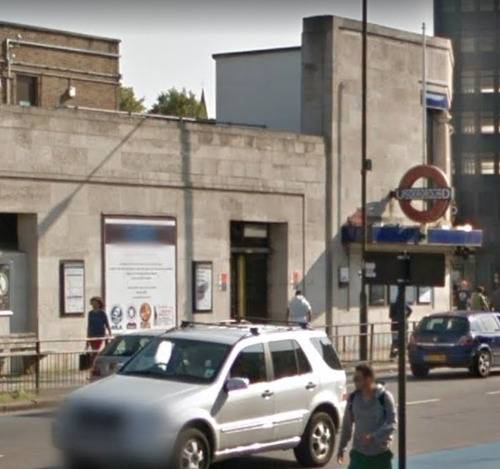 1926 H
1926 H
Derived from 'charcoal burners'
Covent Garden 1907 G
1907 G
Kunagi oli siin Westminsteri konvendi aed
This was once the garden of the Westminster Convention
Croxley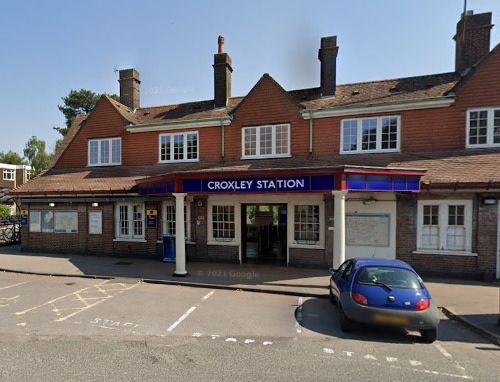 1925 -> 1949 Croxley Green
1925 -> 1949 Croxley Green
From the words 'crocs' and 'leah' meaning woodland
Dagenham East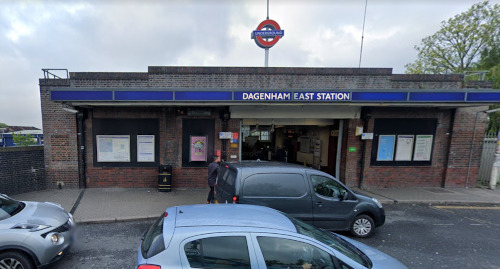 1902 -> 1949 Dagenham
1902 -> 1949 Dagenham
Dagenham Heathway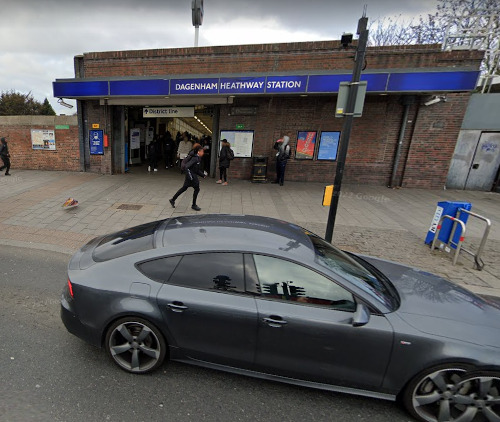 1932 -> 1949 Heathway
1932 -> 1949 Heathway
Heathway is the name of a nearby road
Debden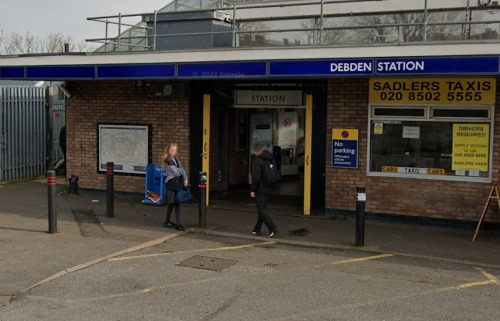 1949
1949
Meaning "deep valley"
Dollis Hill 1909
1909
Probably after a nearby estate
Ealing Broadway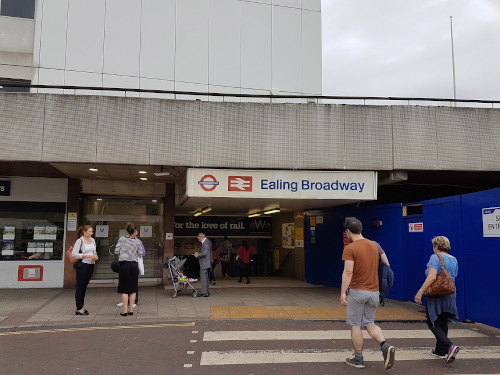 1879 -> 1920
1879 -> 1920
The local chieftain was called a 'gilla' and has undergone several changes, the 'broadway' being the broad street by the station
Ealing Common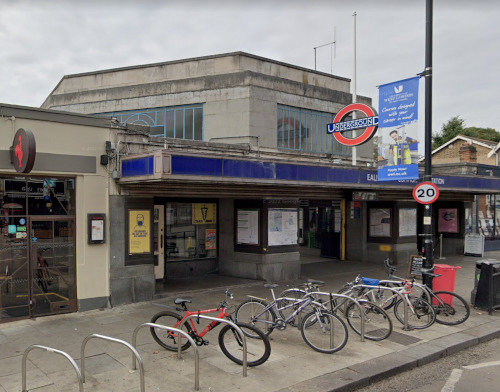 1910 H
1910 H
See previous
Earl's Court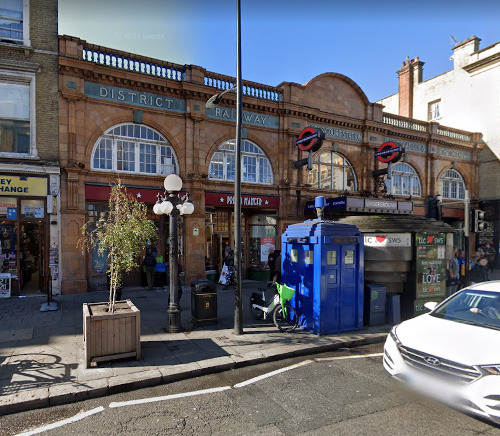 1871 -> 1878
1871 -> 1878
One earl had estates here - the Earl of Oxford
East Acton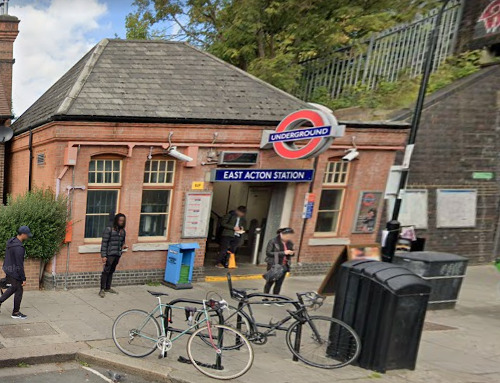 1920
1920
Farm by oak trees
Eastcote 1906 H
1906 H
Old English 'cote' meant farm or shelter
East Finchley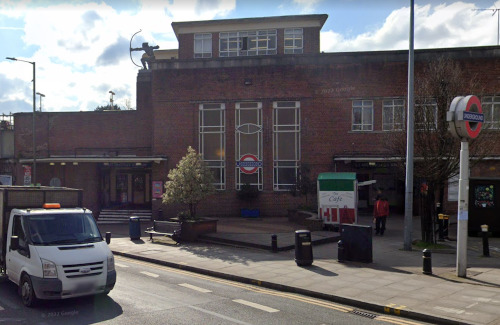 1939 H
1939 H
Probably from a personal name - Fince Forest
East Ham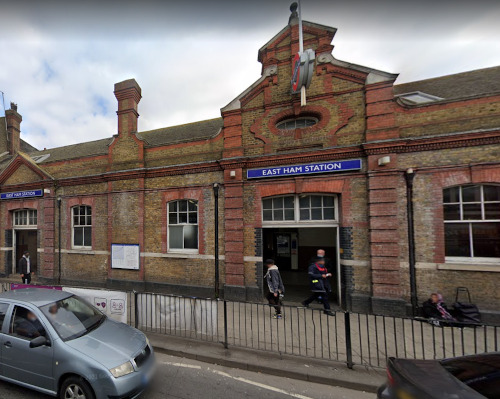 1902
1902
Old English 'amm' meaning watery meadow
East Putney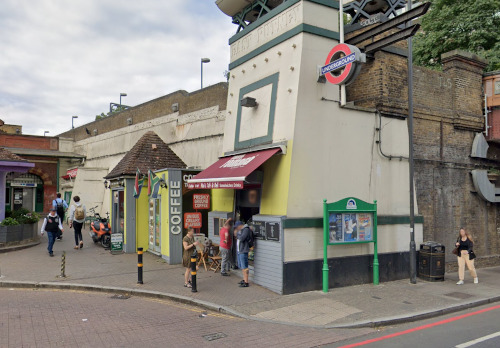 1889
1889
By Person's Name - Puttan Landing Place
Edgeware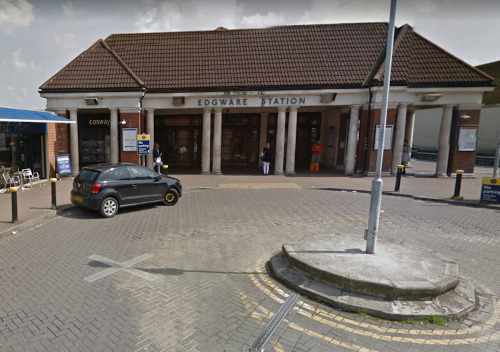 1924
1924
By name Ecgis
Edgeware Road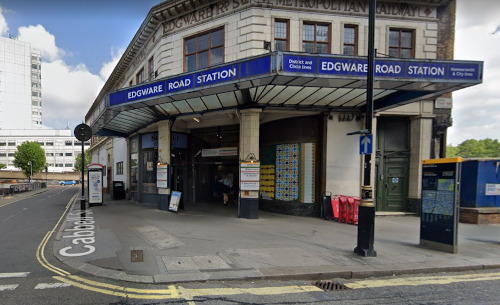 1907 G
1907 G
See previous
Elephant & Castle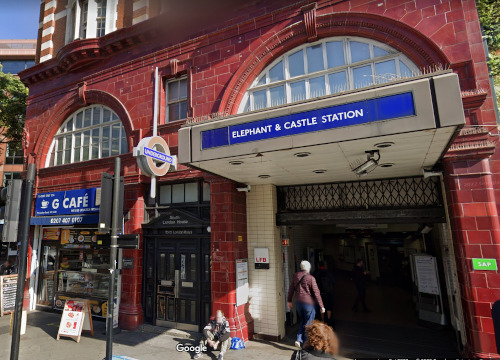 1906 G
1906 G
Based on the pub above the shopping centre (now demolished).
Elm Park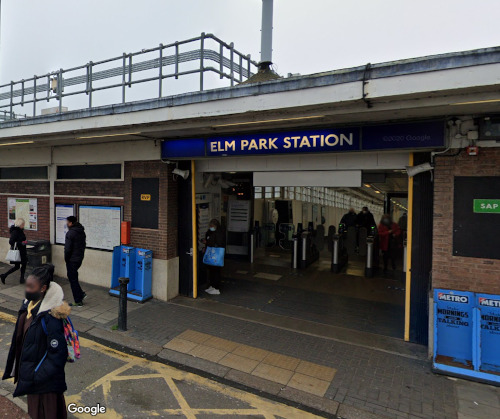 1935
1935
According to the elm trees that grew nearby
Embankment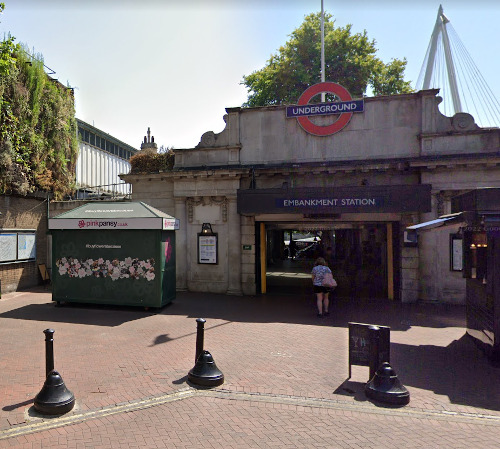 1915 -> 1974 -> 1976 Charing Cross Embankment G
1915 -> 1974 -> 1976 Charing Cross Embankment G
The Embankment is filled and widened area on the banks of the Thames, completed in 1870.
Epping 1949
1949
After the Yippinga tribe who lived here
Euston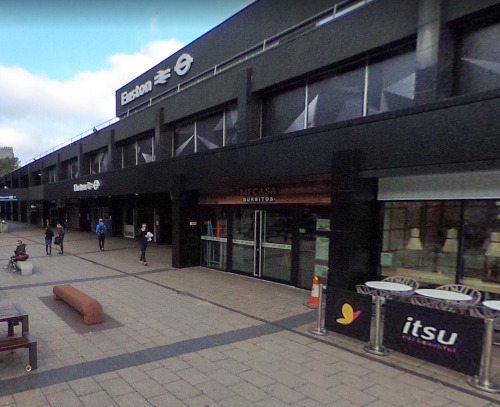 1907
1907
After the Earl of Grafton who resided at Euston Hall, Suffolk
Euston Square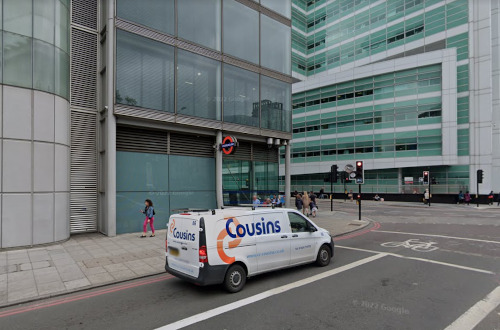 1863, 1909 Gower Street
1863, 1909 Gower Street
See previous
Fairlop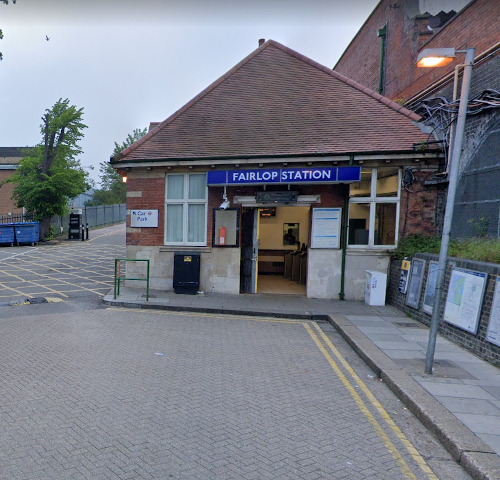 1948
1948
"Fair lop" - a rather long legend about a man who died and whose coffin was made from an oak tree near his home, which then began to bloom...
Farringdon 1863 -> 1922 -> 1936 Farringdon Street, Farringdon & High Holborn
1863 -> 1922 -> 1936 Farringdon Street, Farringdon & High Holborn
Merchant William de Faringdon operated here in the 13th century
Finchley Central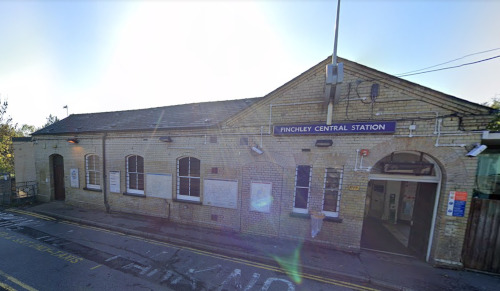 1940 H
1940 H
Probably by person Finc
Finchley Road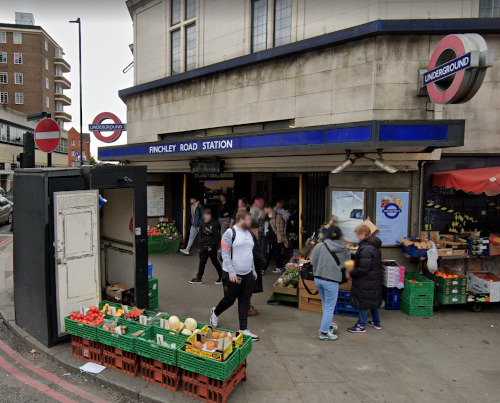 1879
1879
See previous
Finsbury Park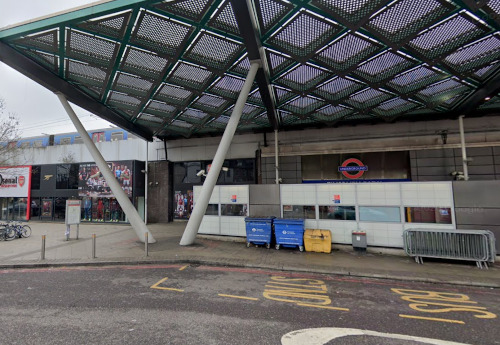 1906
1906
The district called Finsbury is located several kilometres away from here, but the park was built at the initiative of the local residents
Fulham Broadway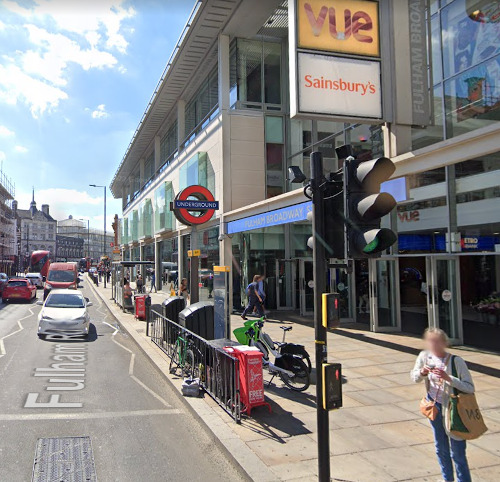 1880 -> 1952
1880 -> 1952
A person named Fulla
Gants Hill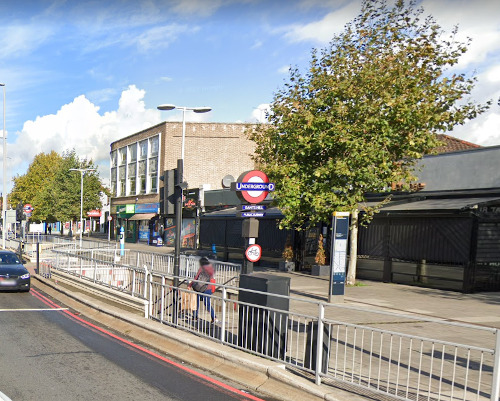 1947 H
1947 H
By Richard le Gant
Gloucester Road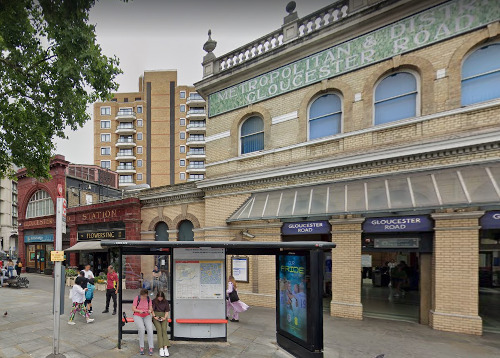 1868 -> 1907 Brompton
1868 -> 1907 Brompton
Maria was Countess of Gloucester
Golders Green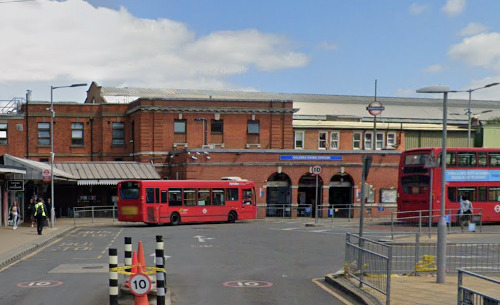 1907 G
1907 G
Probably by person but not clear if John le Godere or John Godyer of Hendon
Goldhawk Road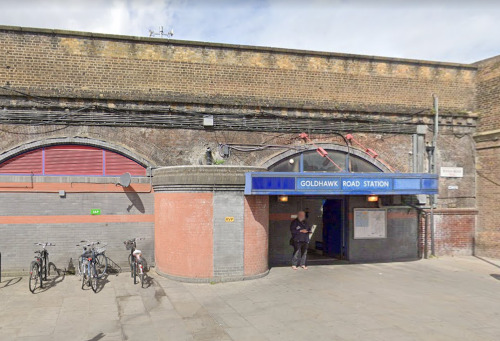 1914
1914
Family Goldhawke
Goodge Street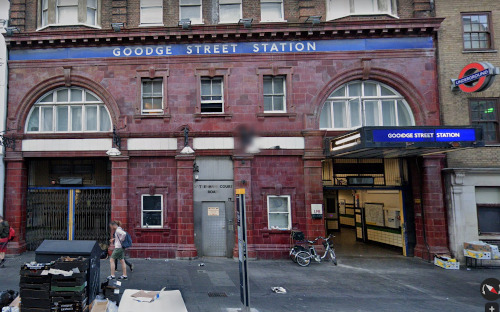 1907 -> 1908 Tottenham Court Road G
1907 -> 1908 Tottenham Court Road G
Nearby street laid out by William and Francis Goodge
Grange Hill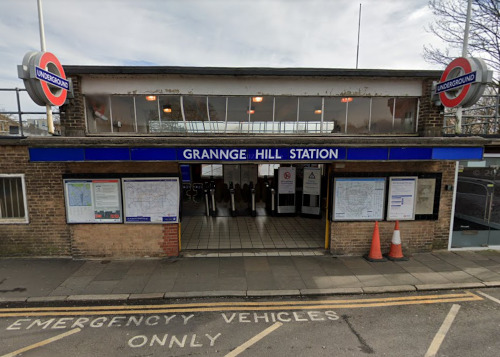 1948
1948
The Grange was a manor here that originally belonged to the church
Great Portland Street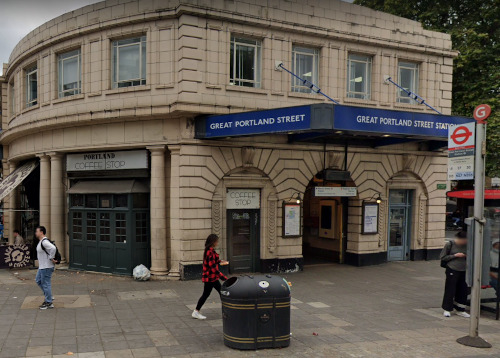 1863 -> 1917 Portland Road
1863 -> 1917 Portland Road
Marleybone Manor belonged to the Earl of Portland
Greenford 1947
1947
By River Brent crossing
Green Park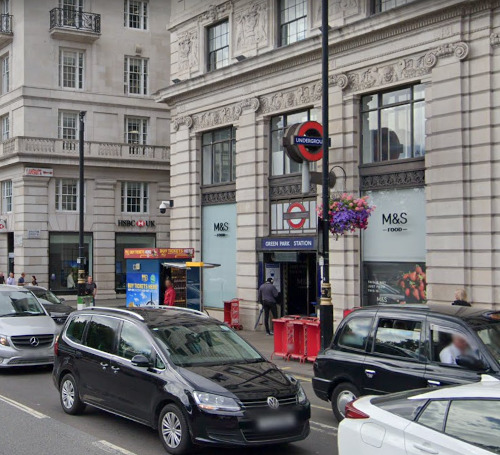 1906 -> 1933 H
1906 -> 1933 H
According to the park where no planted flower grows
Gunnesbury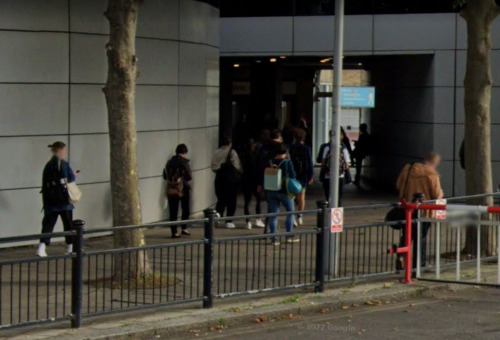 1877 -> 1906
1877 -> 1906
From the Scandinavian female name Gunnhild
Hainault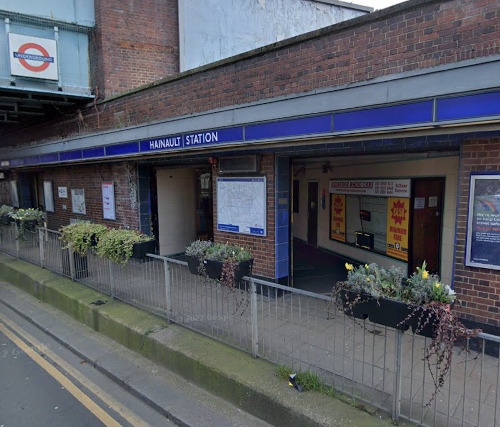 1948
1948
From the Old English words 'iwan' and 'holt' meaning "household with woodland"
Hammersmith 1864 -> 1868 -> 1874 H
1864 -> 1868 -> 1874 H
As you might expect, by a local blacksmith
Hampstead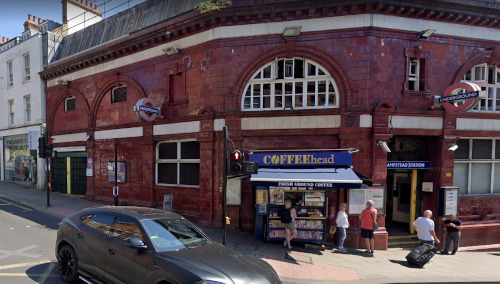 1907 G
1907 G
Means home place in the old language
Hanger Lane 1947
1947
Wood storage site
Harlesden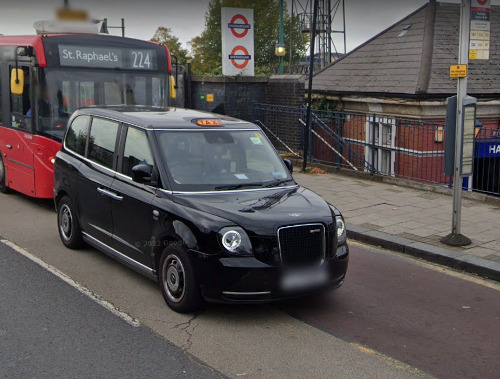 1917
1917
Heorowulf Farm
Harrow & Wealdstone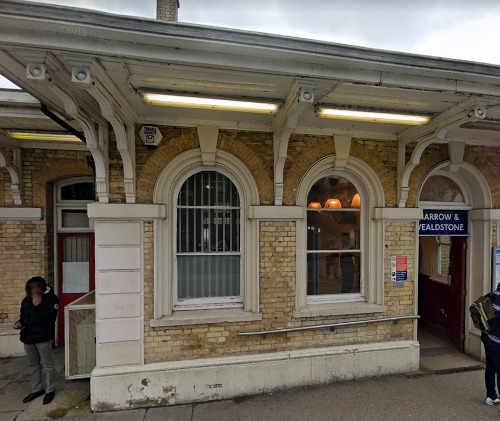 1917
1917
Wealstone probably means boundary stone in the forest, see below for Harrow
Harrow-on-the-Hill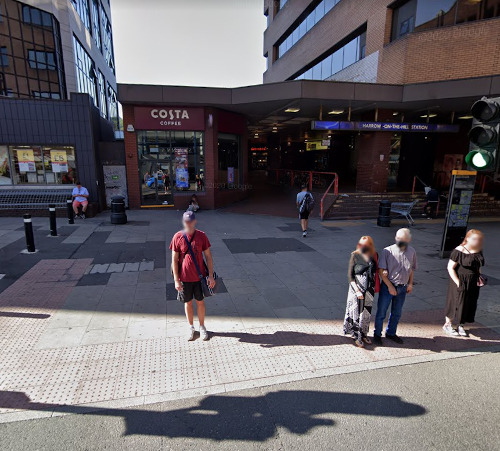 1880 -> 1894 Harrow
1880 -> 1894 Harrow
From 'hearg' - pagan temple
Harvard Square
There has never been an Underground station with that name. It was one of the passwords of Soviet spies to ask for directions to this station. 
Hatton Cross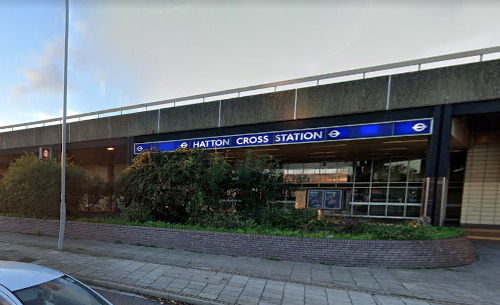 1975
1975
Farm on the moor and probably a hint of a road cross
Heathrow 1976 -> 1983 -> 1986
A row of houses on a moor
Hendon Central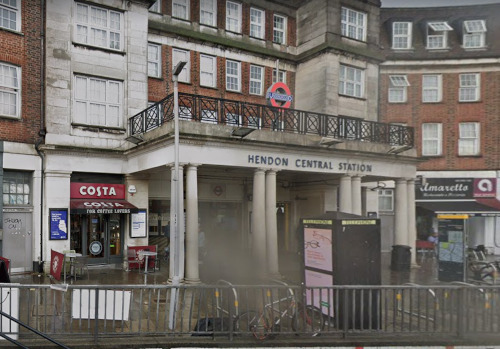 1923
1923
From 'haeh' and 'dun' - on a high hill
High Barnet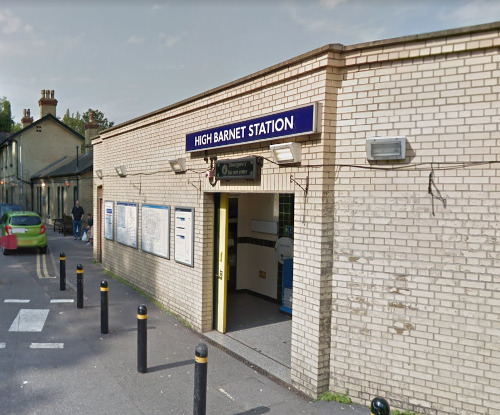 1940
1940
'Baernet' - a place cleared by burning
Highbury & Islington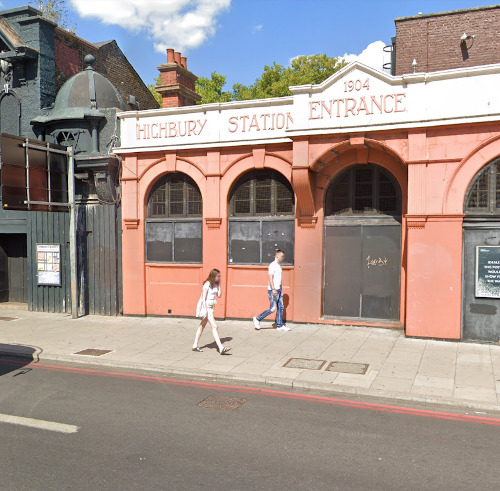 1904 -> 1922 Highbury
1904 -> 1922 Highbury
Highbury was a Roman summer camp, Gisla is a person's name
Highgate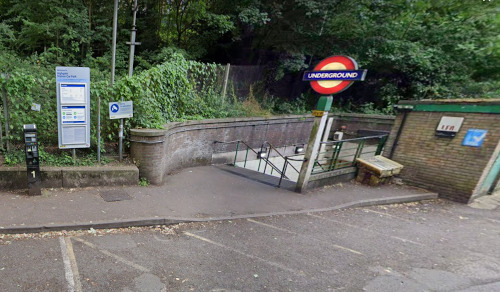 1941 H
1941 H
There used to be a tollgate on the hill where tax was collected on goods entering the town market
High Street Kensington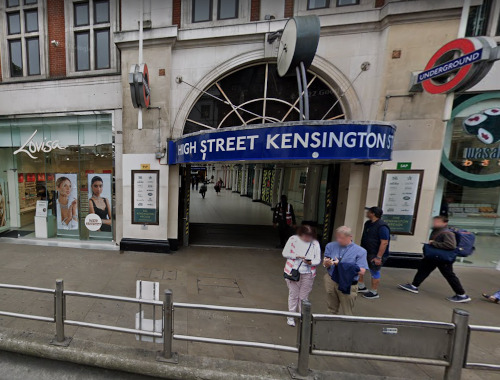 1868
1868
By High Street
Hillingdon 1923
1923
Given name Hilda
Holborn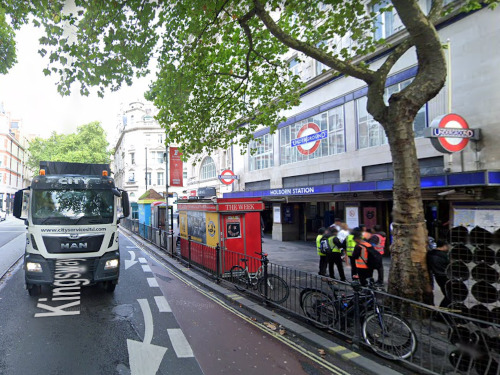 1933 HG
1933 HG
From the words 'holh' and 'burna' - stream valley
Holland Park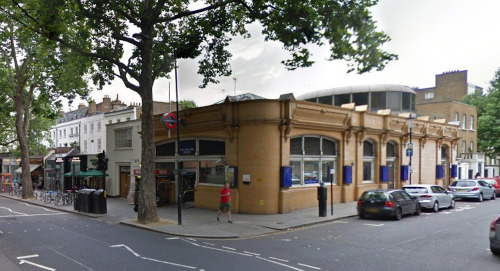 1900
1900
There was once a Holland House here, Holland is the name of a person, not a country
Holloway Road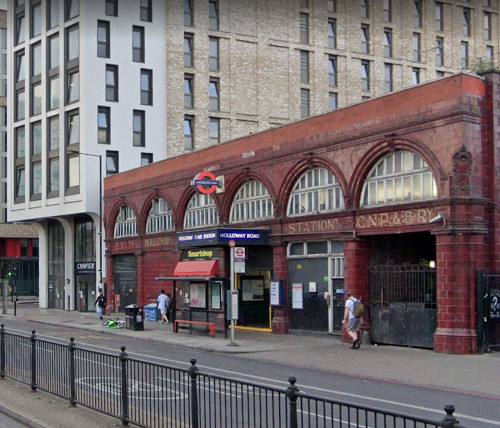 1906 G
1906 G
Here the houses were in a hollow by the road, between the higher grounds of Highgate and Islington
Hornchurch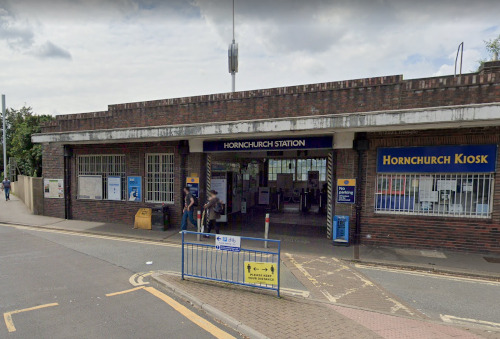 1902
1902
Some old monastery once stood here
Hounslow Central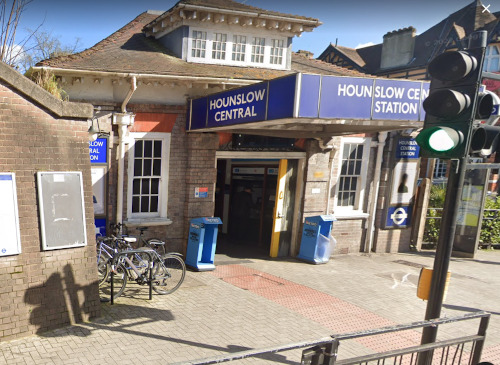 1886 -> 1912 -> 1925 Heston Hounslow
1886 -> 1912 -> 1925 Heston Hounslow
The Hund and the 'hlaw' - the hill where Hund lived
Hounslow East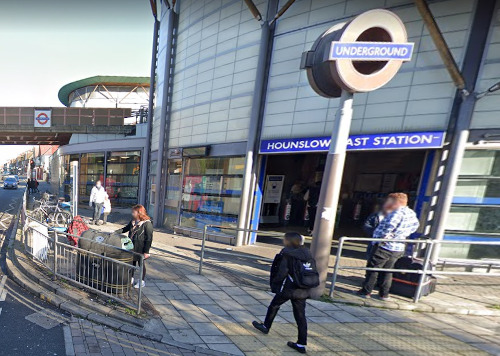 1909 -> 1925 Hounslow Town
1909 -> 1925 Hounslow Town
See previous
Hounslow West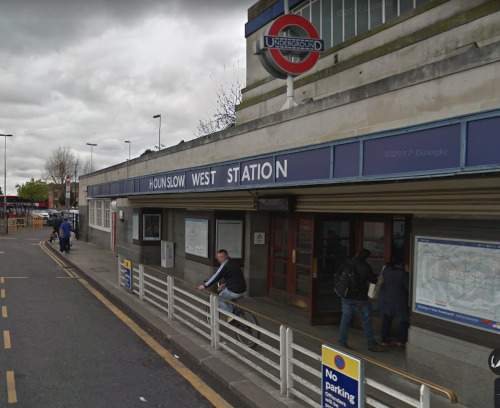 1884 -> 1925 -> 1926 Hounsloe Barracs H
1884 -> 1925 -> 1926 Hounsloe Barracs H
As before
Hyde Park Corner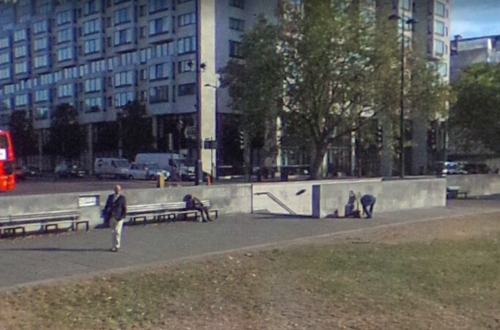 1906
1906
By park
Kennington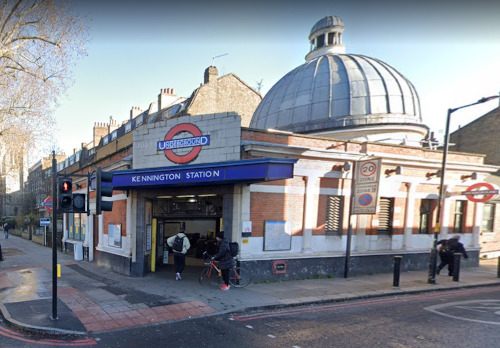 1890
1890
From the name Cena.
Kensal Green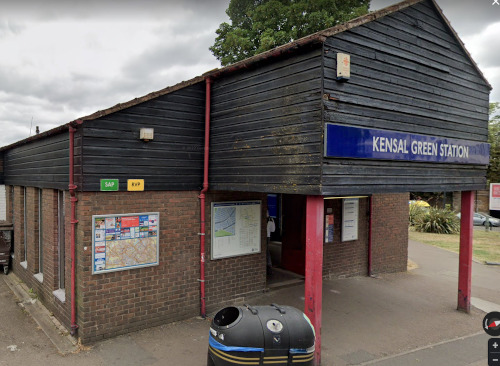 1916
1916
Kings forest.
Kensington Olympia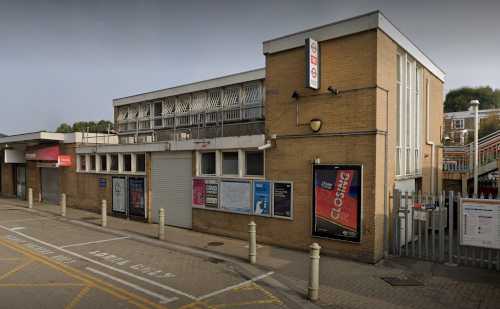 1868 -> 1946
1868 -> 1946
From the personal name Cynesige, Olympia is a large exhibition building.
Kentish Town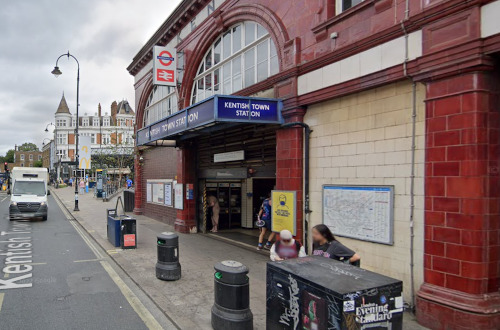 1907 G
1907 G
It is believed that someone's farmer's nickname was Kentish.
Kenton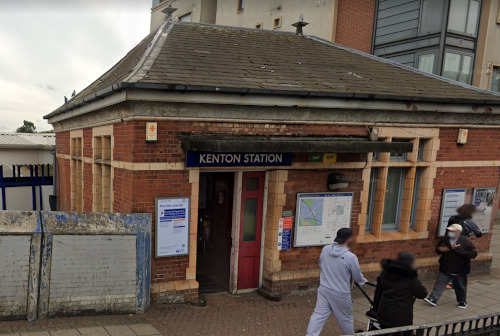 1917
1917
Name Coena.
Kew Gardens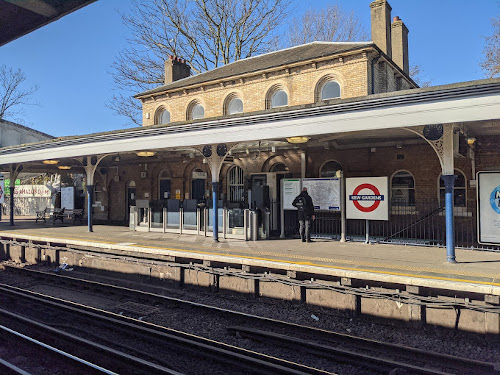 1877
1877
The Old English 'key' meaning quay or dock.
Kilburn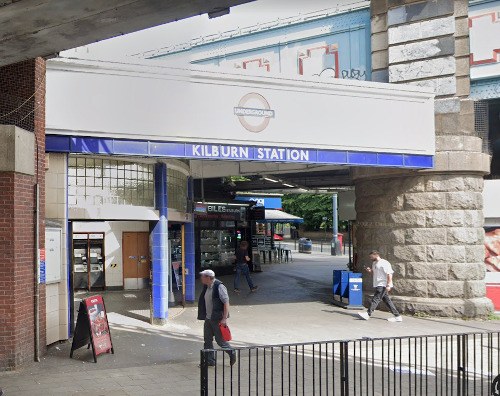 1879 -> 1950
1879 -> 1950
From 'cyne-burna' meaning royal stream.
Kilburn Park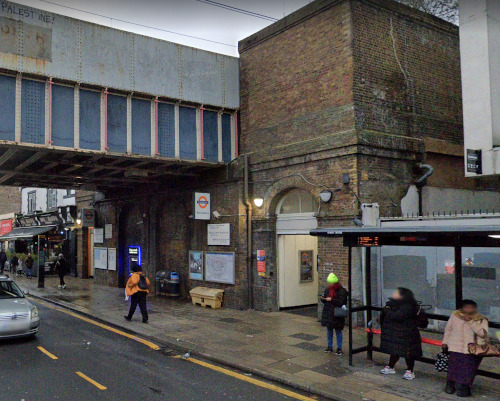 1915
1915
See previous.
Kingsbury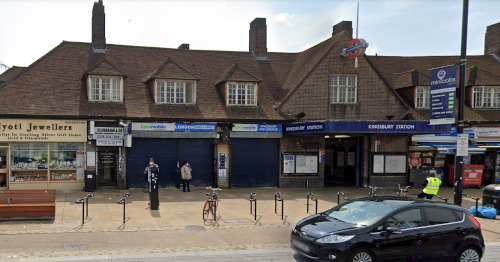 1932
1932
The King's Manor.
King's Cross St Pancras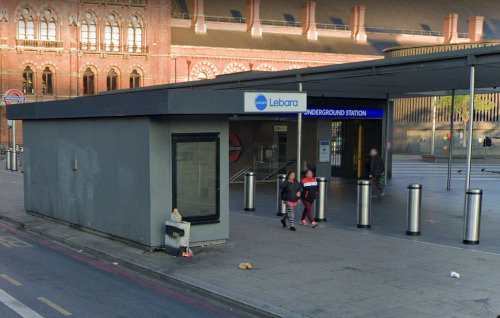 1863 -> 1925 -> 1933 -> 1941
1863 -> 1925 -> 1933 -> 1941
The first part of the name means the statue of King George IV, the second the saint whose church is nearby. If you want to know who was St Pancras (don't say "pancreas"  ), you can watch this video
), you can watch this video 
Knightsbridge 1906
1906
Can be interpreted as Young Mens' Bridge. Very unic name, see "kniGHTSBRidge". Noticed?
Ladbroke Grove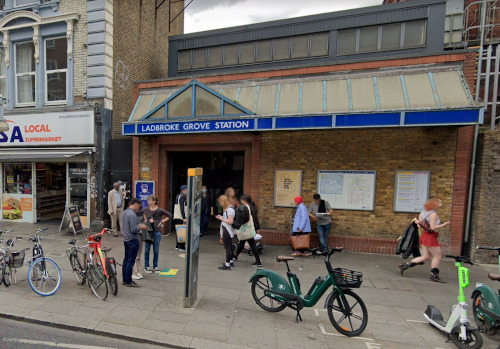 1864 Notting Hill
1864 Notting Hill
According to Landowner Richard Ladbrooke.
Lambeth North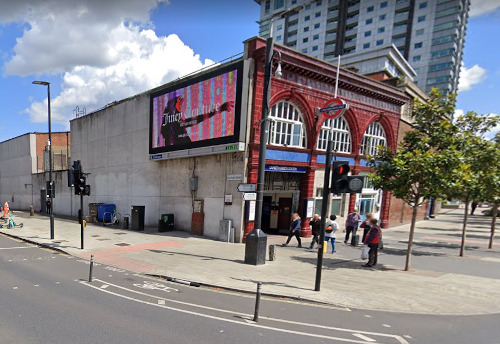 1906 -> 1917 Kennington Road, Westminster Bridge Road G
1906 -> 1917 Kennington Road, Westminster Bridge Road G
From Old English 'lambe' and 'hythe' - port where sheep were transported.
Lancaster Gate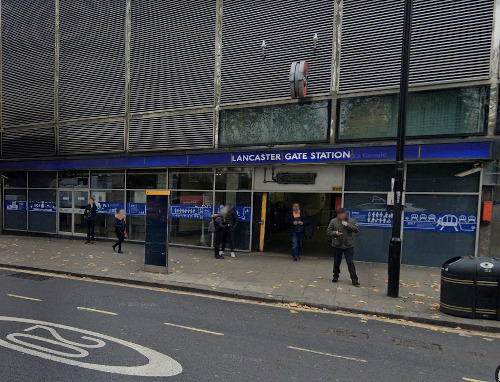 1900
1900
Hyde Park gate named in honour of the Duchess of Lancaster.
Latimer Road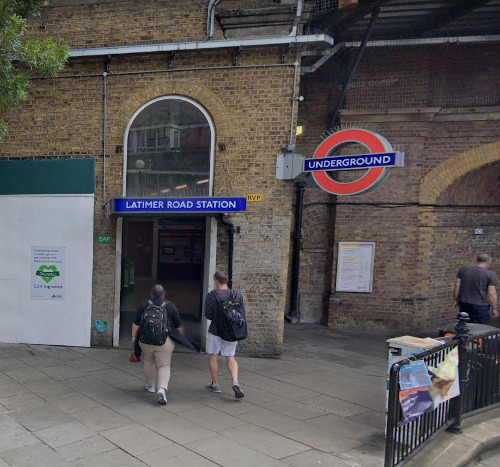 1868
1868
According to Landowner Edward Latymer.
Leicester Square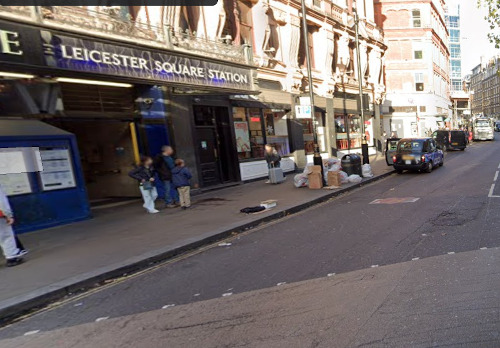 1906 HG
1906 HG
Leyton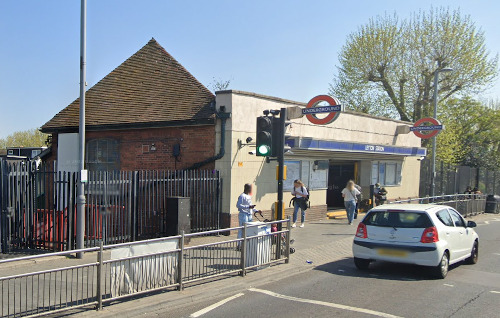 1947
1947
By the River Lea.
Leytonstone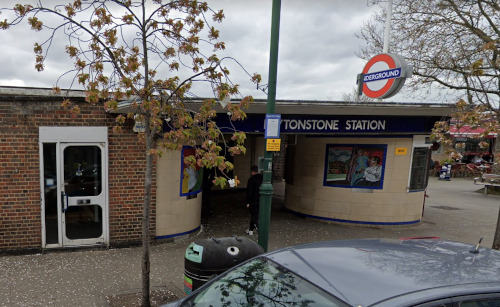 1947
1947
Differs from previous in the word 'stone', thought to refer to a landmark or boundary marker.
Liverpool Street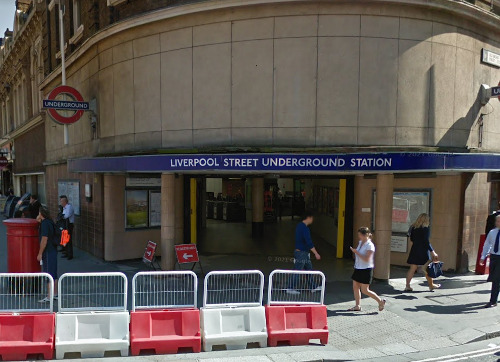 1875 -> 1909 -> 1912 Bishopsgate
1875 -> 1909 -> 1912 Bishopsgate
In honour of former Prime Minister Lord Liverpool.
London Bridge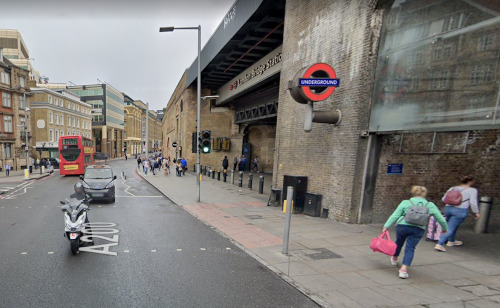 1900
1900
By bridge.
Loughton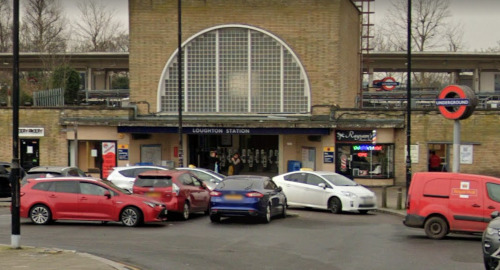 1940 -> 1948
1940 -> 1948
Name Luhha.
Maida Vale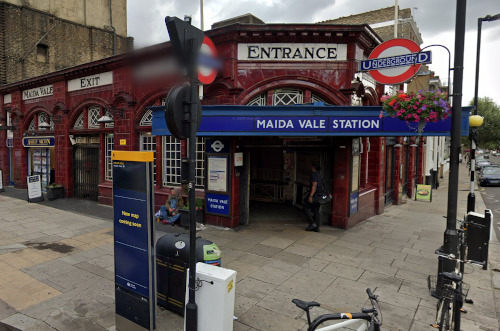 1915 Elgin Avenue
1915 Elgin Avenue
After the Italian town where the battle once took place.
Manor House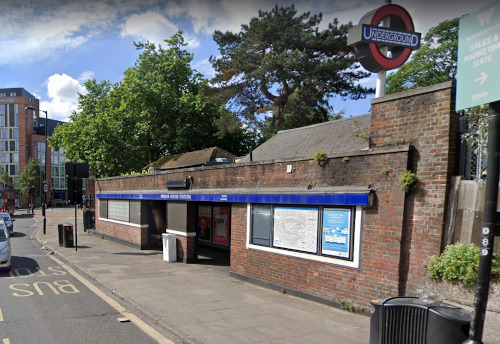 1932 H
1932 H
After the pub of that name.
Mansion House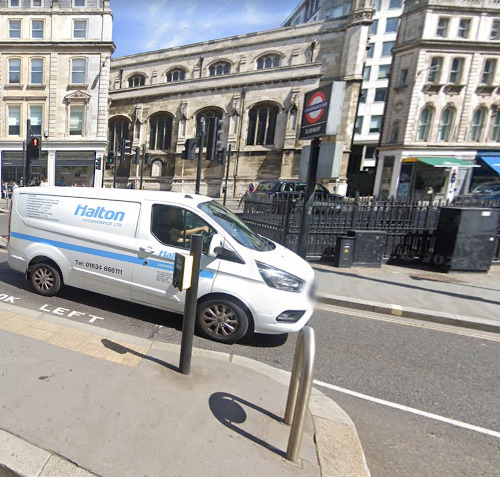 1871 H
1871 H
After the residence of the Mayor of the City of London, possibly through the name of the pub of that name.
Marble Arch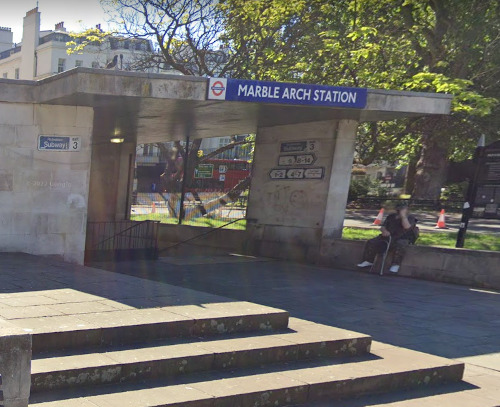 1900
1900
According to the marble arch gate.
Marylebone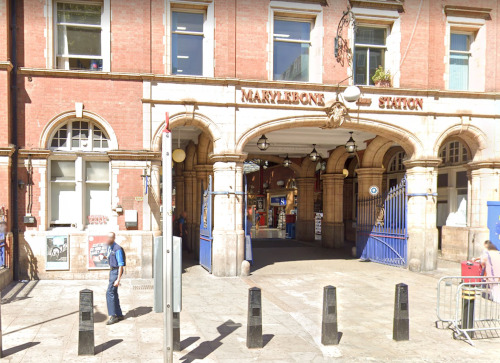 1907 -> 1917 Great Central
1907 -> 1917 Great Central
According to local church - St Mary-by-the-Bourn (brook).
Mile End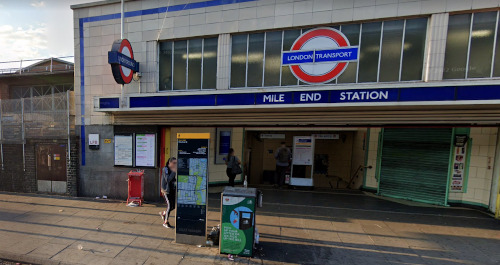 1946
1946
About one mile from the town centre.
Mill Hill East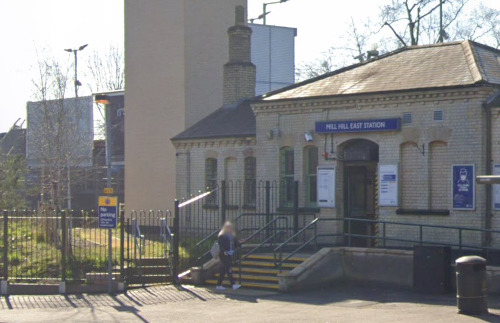 1941
1941
There was once a mill on the hill.
Monument 1884
1884
After the Great Fire of London monument.
Moorgate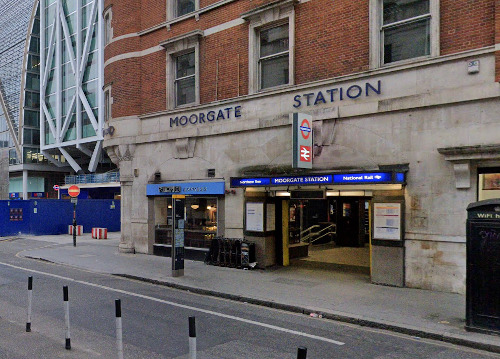 1900
1900
By the former city gate.
Moor Park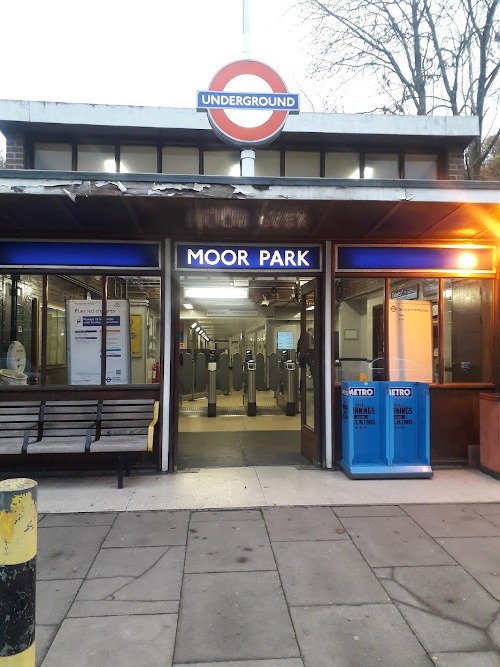 1950
1950
A very damp place once was.
Morden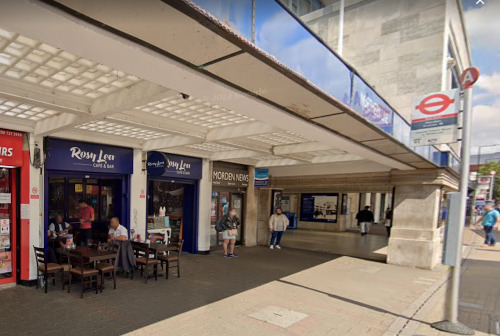 1926 H
1926 H
From the words 'mor' and 'dun' meaning swamp and hill.
Mornington Crescent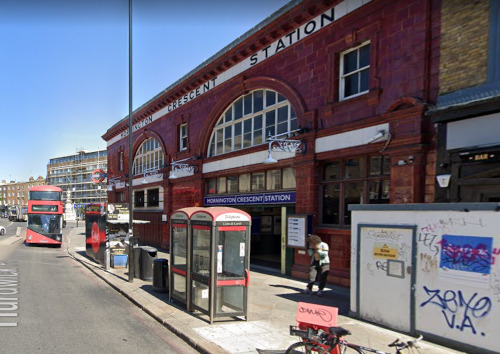
 1907 G
1907 G
After a now defunct park named after one of the nobles.
Naesden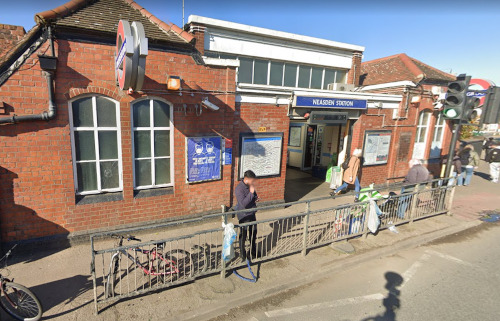 1880 -> 1910 -> 1932 Kingsbury & Naesden, Naesden & Kingsbury
1880 -> 1910 -> 1932 Kingsbury & Naesden, Naesden & Kingsbury
In the old language "nose-shaped mountain".
Newbury Park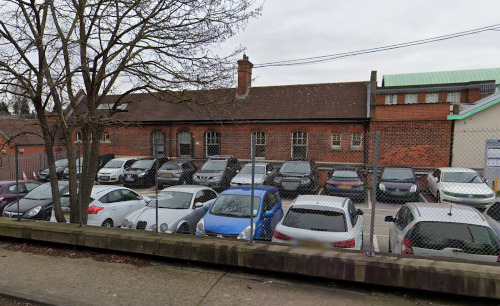 1947
1947
'Burh'- house.
Nine Elms 2021
2021
After a row of trees
North Acton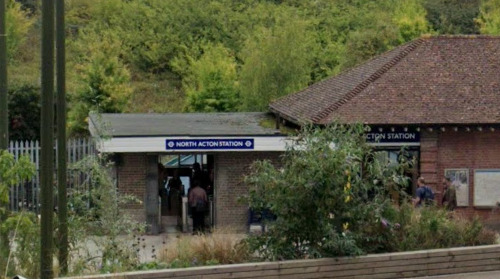 1923
1923
See Acton Town
North Ealing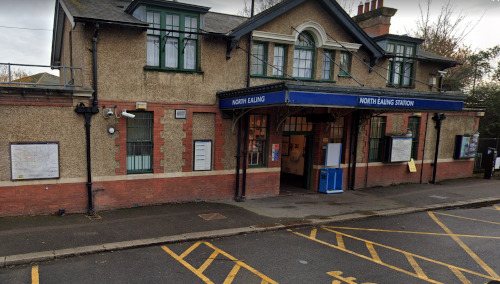 1903
1903
See Ealing Broadway
Northfields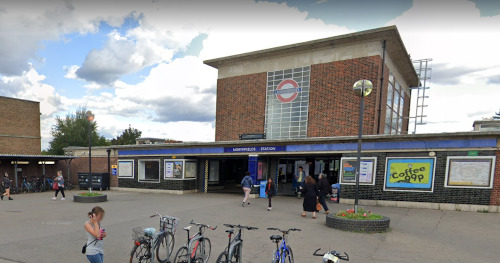 1908 -> 1911 -> 1932 Northfield Halt, Northfield & Little Ealing H
1908 -> 1911 -> 1932 Northfield Halt, Northfield & Little Ealing H
The name is self-explanatory.
North Harrow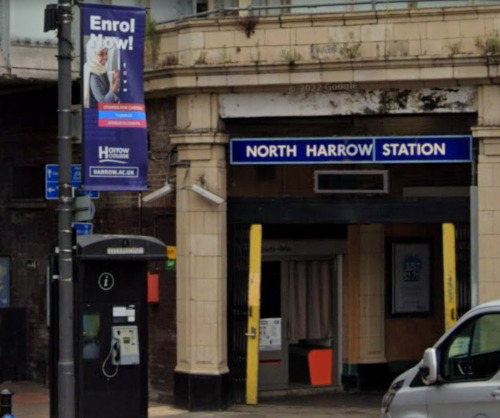 1915
1915
See Harrow-on-the-Hill
North Greenwich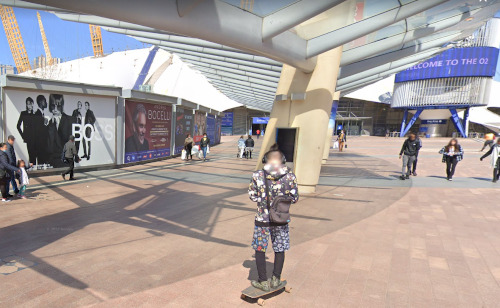 1999
1999
Green village.
Northolt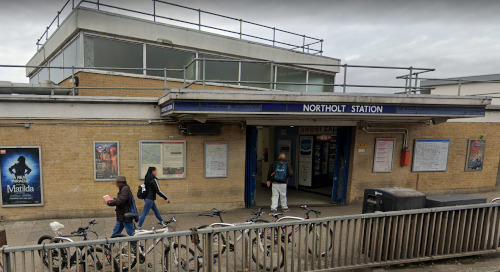 1907
1907
Means north moor.
North Wembley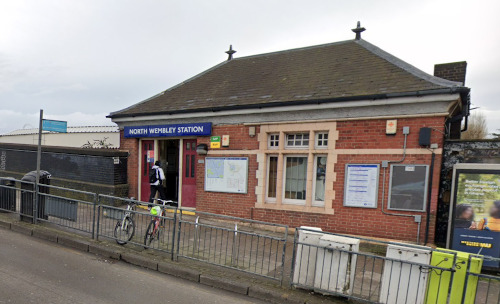 1912 -> 1917 Wembley Central
1912 -> 1917 Wembley Central
See Wembley Central
Northwick Park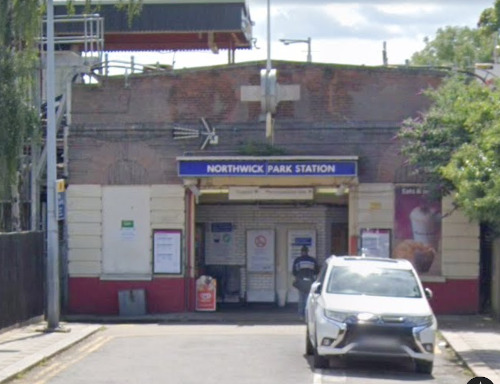 1923 -> 1937 Northwick Park & Kenton
1923 -> 1937 Northwick Park & Kenton
By Northwick Park & Kenton Northwick family.
Northwood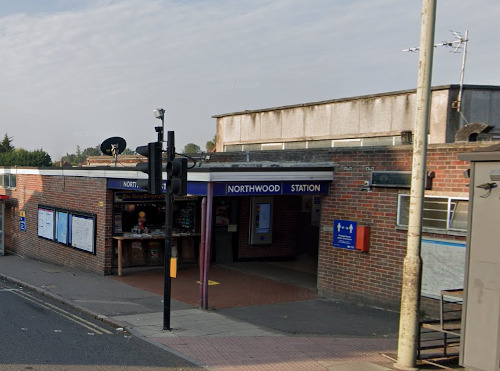 1887
1887
Farm which was north of Ruislip.
Northwood Hills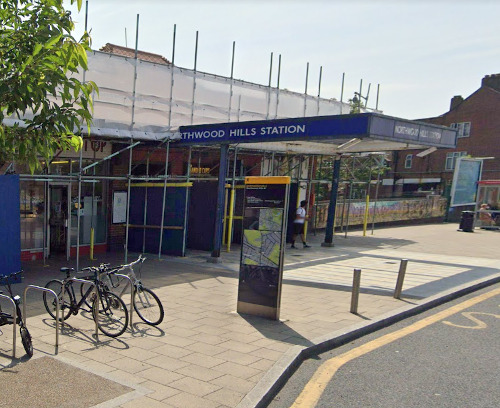 1933
1933
See previous
Notting Hill Gate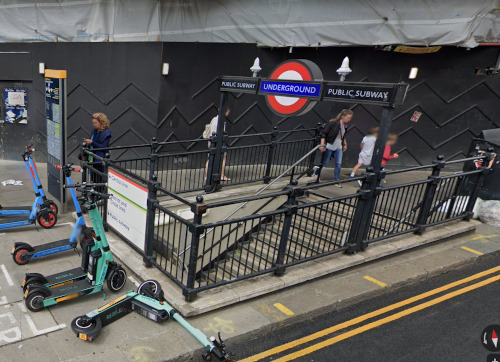 1868
1868
May be by the Knottying family.
Oakwood 1946 H
1946 H
Here stood the large house Oak Lodge.
Old Street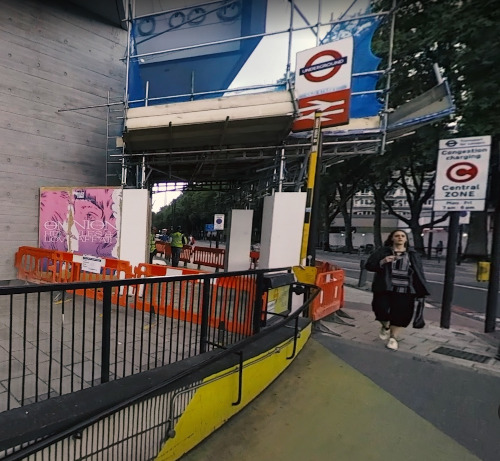 1901
1901
Ancient Roman road.
Olympia
See Kensington
Osterley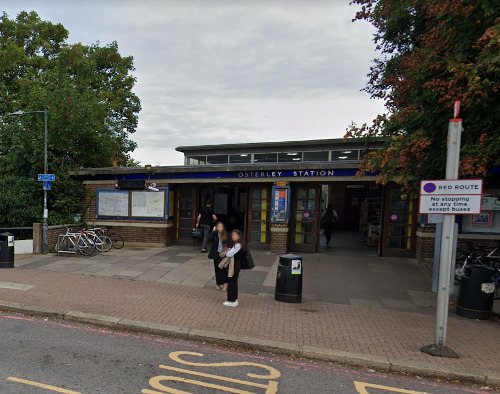 1883 -> 1934 Osterley & Spring Grove H
1883 -> 1934 Osterley & Spring Grove H
Oval 1890
1890
By Cricket ground.
Oxford Circus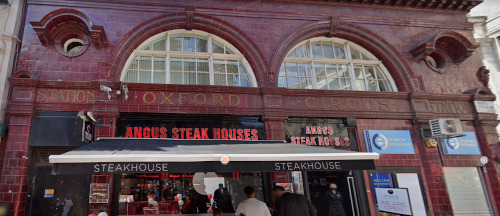 1900 G
1900 G
From here the old road went towards Oxford.
Paddington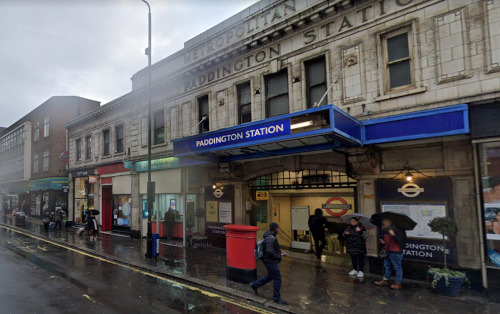 1913
1913
Named after Padda
Park Royal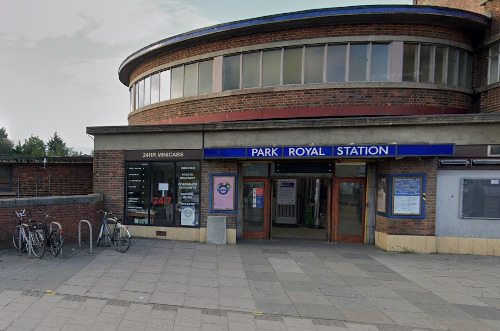 1903 -> 1931
1903 -> 1931
The Royal Agricultural Society tried to establish a foothold here, but failed.
.
Parsons Green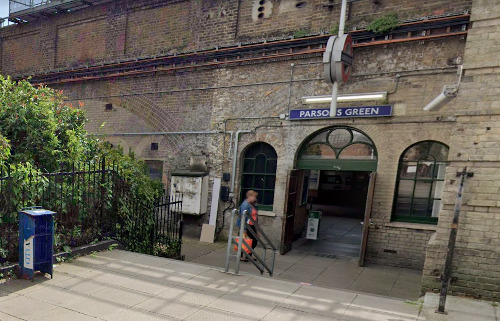 1880
1880
By Fulham Parsonage
Perivale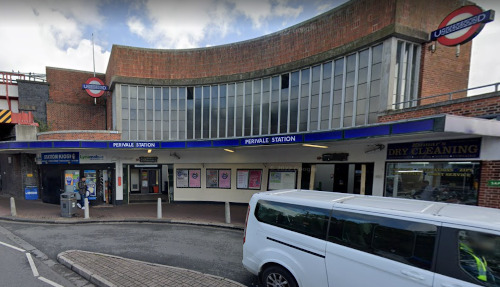 1904
1904
Old English 'perle' meaning pear tree.
Piccadilly Circus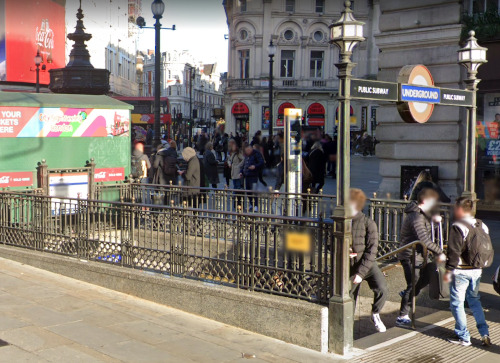 1906 -> 1928 HG
1906 -> 1928 HG
Piccadilly is an old ring collar, tailors lived here.
Pimlico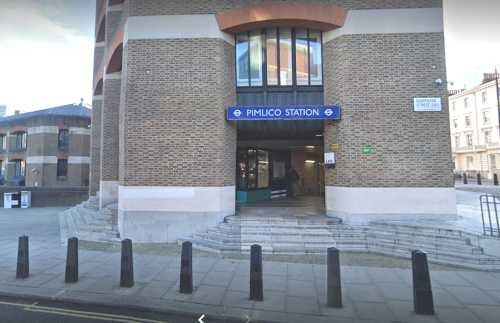 1972
1972
After the well-known innkeeper Ben Pimlico
Pinner 1885
1885
From the name Pinna
Plaistow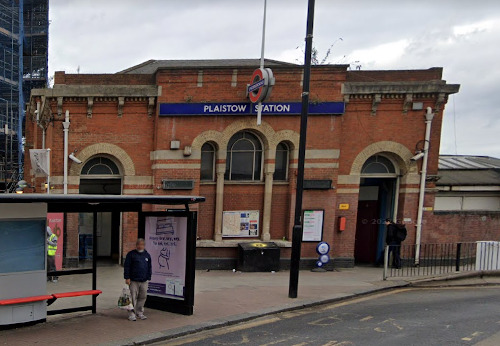 1902
1902
From the words 'pleg' and 'stowe' - sport and place.
Preston Road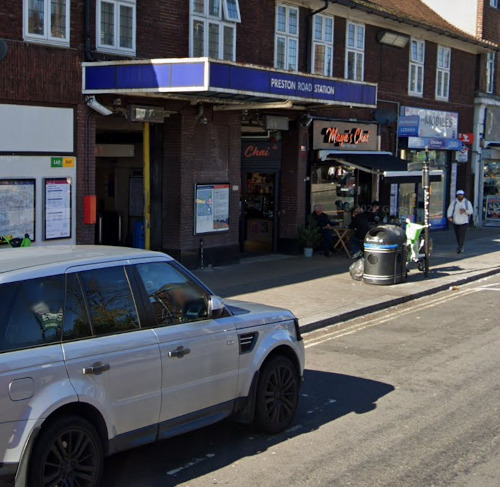 1908 -> 1931
1908 -> 1931
From the words 'priest' and 'tun' - priest's farm.
Putney Bridge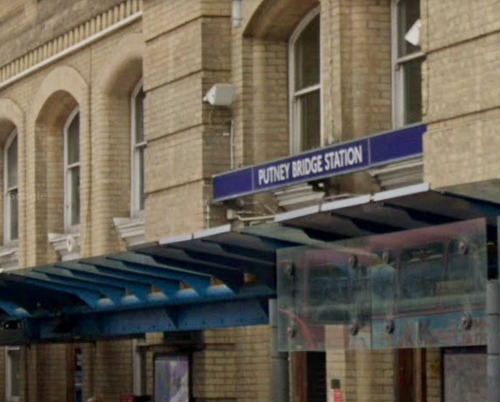 1880 -> 1902 -> 1932 Putney Bridge & Fulham, Putney Bridge & Hurlingham
1880 -> 1902 -> 1932 Putney Bridge & Fulham, Putney Bridge & Hurlingham
Queensbury 1934
1934
At that time there was already a Kingsbury station, by analogy.
Queen's Park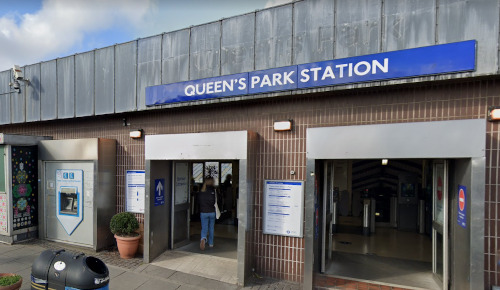 1915
1915
The property named in honour of Queen Victoria.
Queensway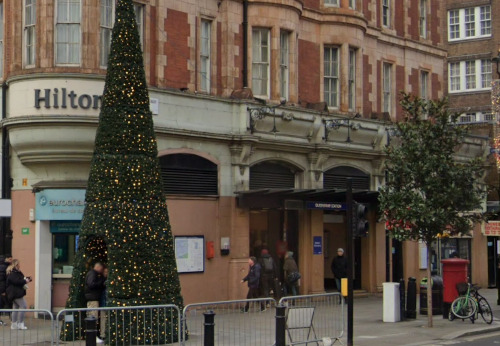 1900 -> 1946 Queen's Road
1900 -> 1946 Queen's Road
By a pub.
Ravenscourt Park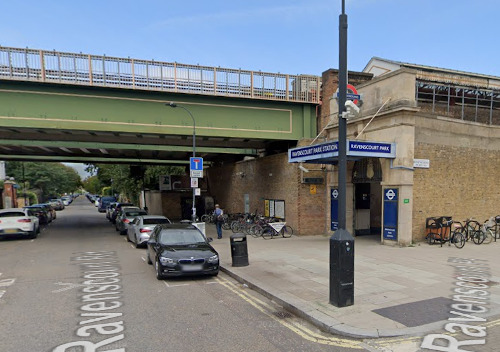 1877 -> 1888 Shaftesbury Road
1877 -> 1888 Shaftesbury Road
After Raven's Court House, why the house was so named is unknown.
Rayners Lane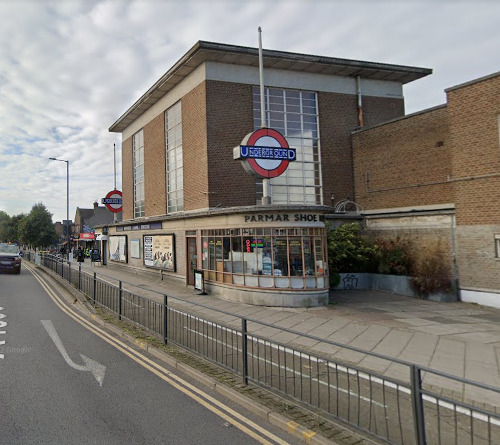 1906 H
1906 H
According to Landowner Daniel Rayner.
Redbridge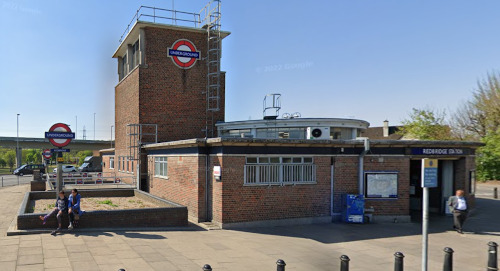 1947 H
1947 H
By bridge.
Regent's Park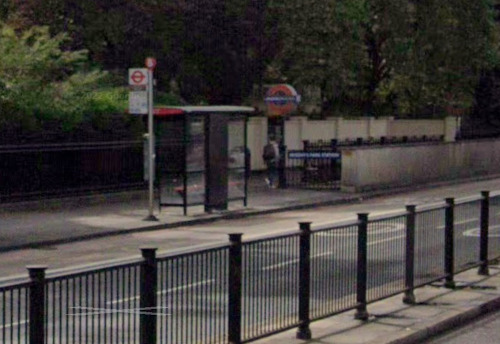 1906 G
1906 G
After the park laid out by the Prince Regent, later George IV.
Richmond 1877 -> 1906
1877 -> 1906
Richemount is a county.
Rickmansworth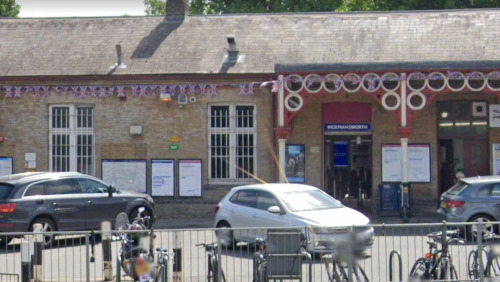 1887
1887
From the personal name Ricmaer.
Roding Valley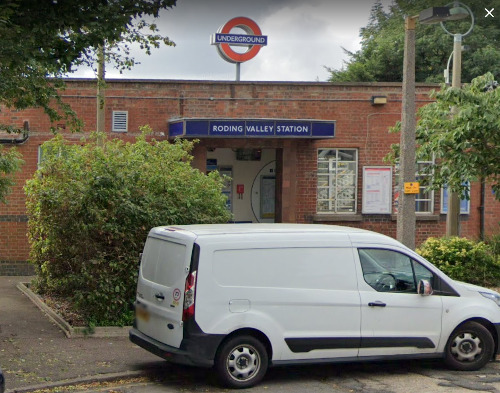 1948
1948
After a river called Roding.
Royal Oak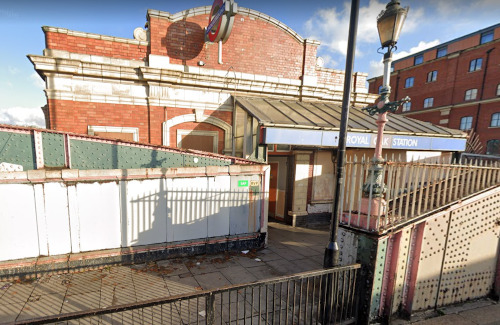 1871
1871
The old inn.
Ruislip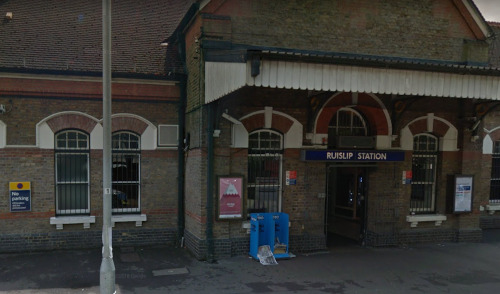 1904
1904
From 'ryse' and 'hlype' - a quick leap.
Ruislip Manor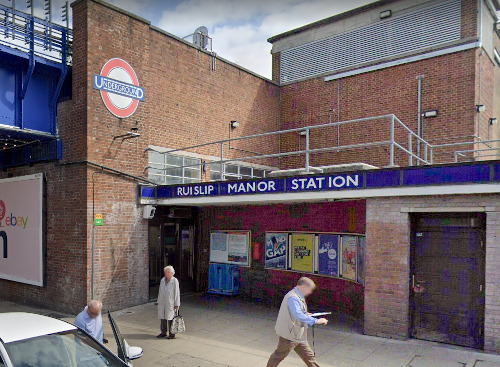 1912
1912
See previous.
Ruislip Manor 1912
1912
The same.
Russell Square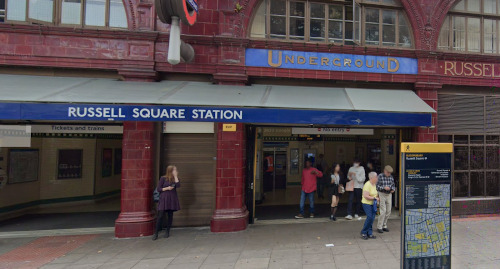 1906 G
1906 G
Russell was the Earl of Bedford.
St James's Park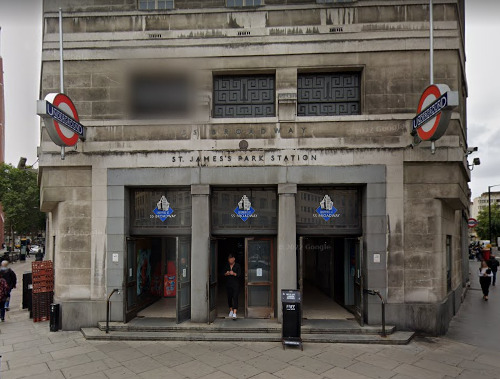 1868
1868
There was once a hospital here named after the saint.
St John's Wood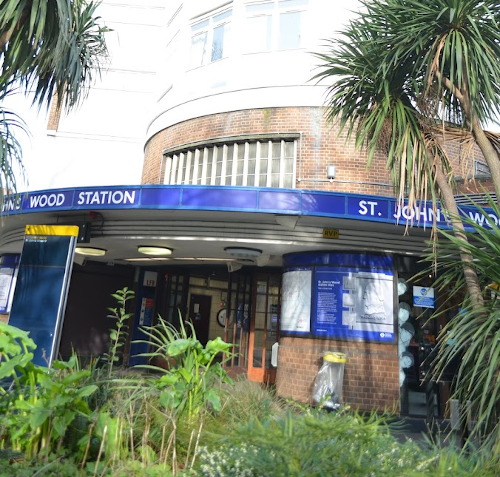 1868 -> 1925 -> 1939 Lord, Marlborough Road
1868 -> 1925 -> 1939 Lord, Marlborough Road
By Knights Templar.
St Paul's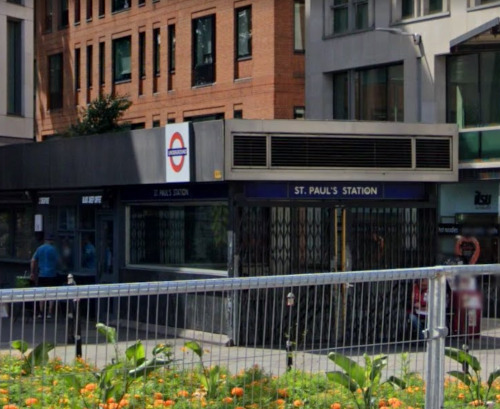 1900, 1937 Newgate Street
1900, 1937 Newgate Street
The nearby cathedral named after the saint.
Seven Sisters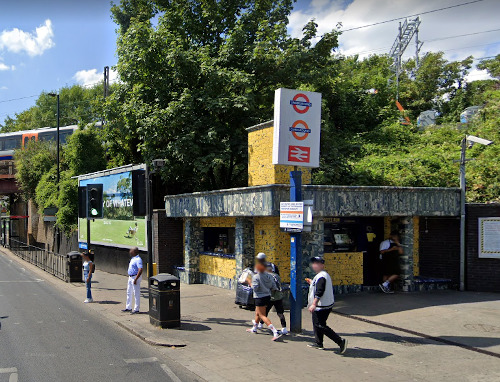 1968
1968
Once there were seven elms growing nearby.
Shepherd's Bush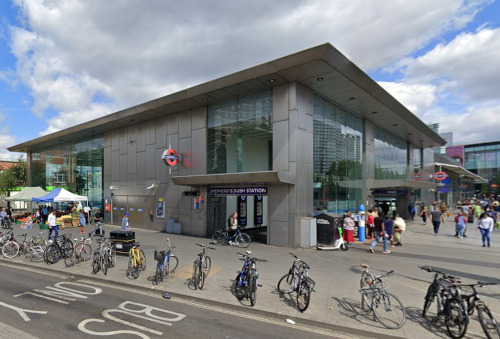 1900
1900
A gathering place for shepherds, possibly related to someone's nickname.
Shepherd's Bush Market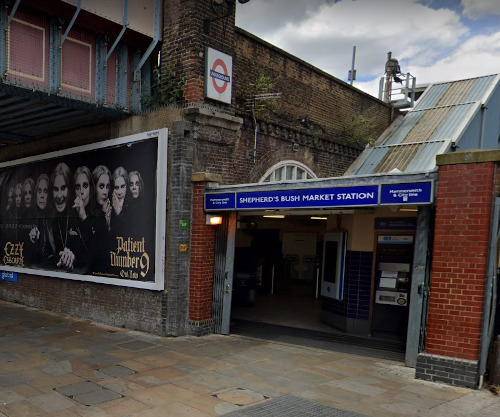 1864 -> 2008
1864 -> 2008
See previous.
Sloane Square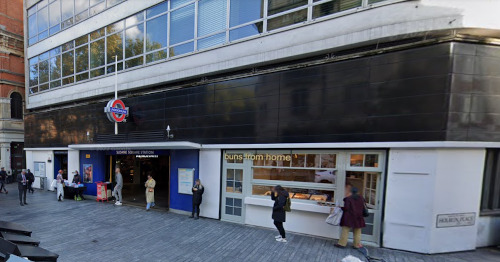 1868 -> 1951
1868 -> 1951
After the physician and botanist Sir Hans Sloane.
Snaresbrook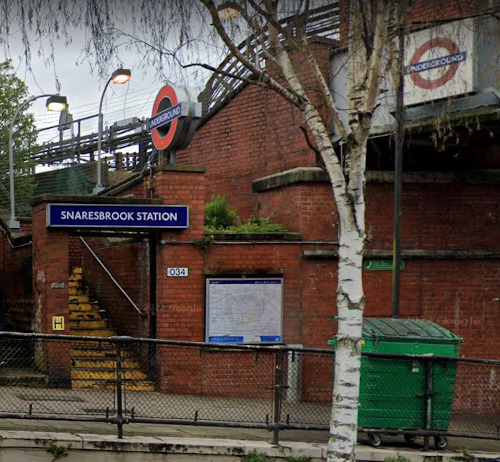 1947
1947
A fast-flowing brook in Old English.
South Ealing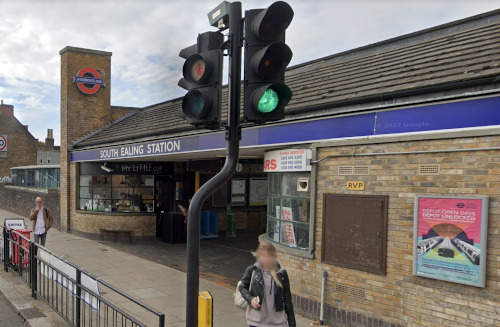 1883
1883
See Ealing Broadway
Southfields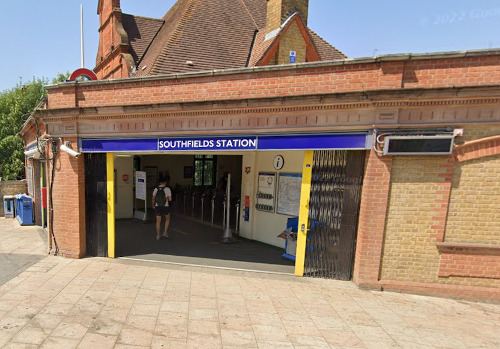 1889
1889
The large field where agricultural produce was sold.
Southgate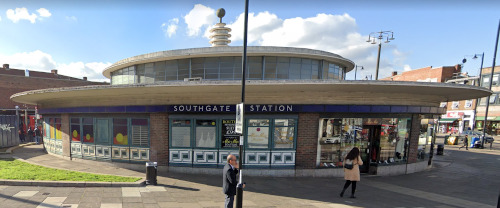 1933 H
1933 H
By farm.
South Harrow 1935 H
1935 H
See Harrow-on-the-Hill
South Kensington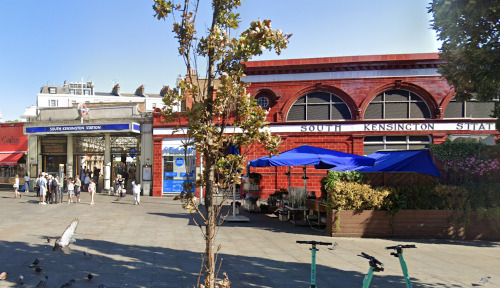 1868 -> 1907
1868 -> 1907
See Kensington.
South Kenton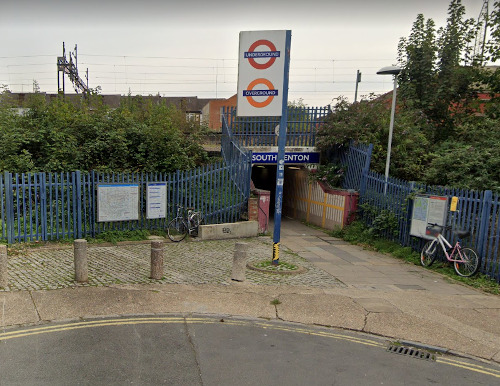 1933
1933
See Kenton.
South Ruislip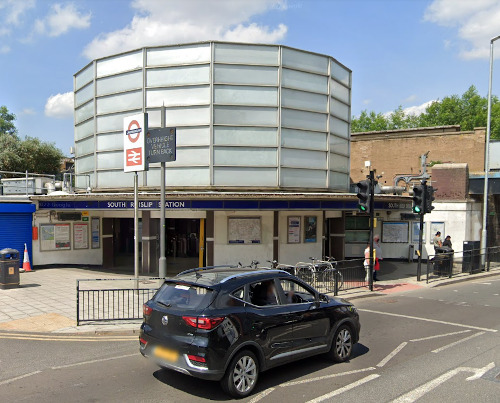 1908 -> 1932 -> 1947 South Ruislip & Norholt Junction
1908 -> 1932 -> 1947 South Ruislip & Norholt Junction
See Ruilip.
Southwark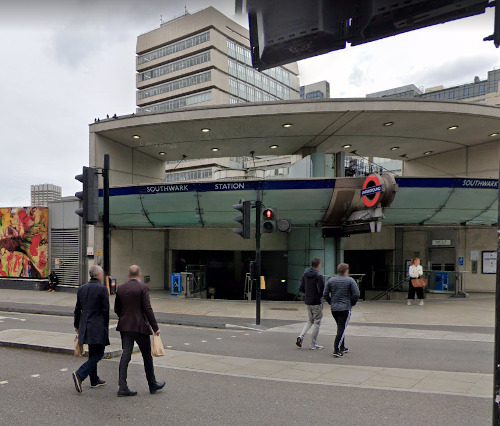 1999
1999
Fortress south the river.
South Wimbledon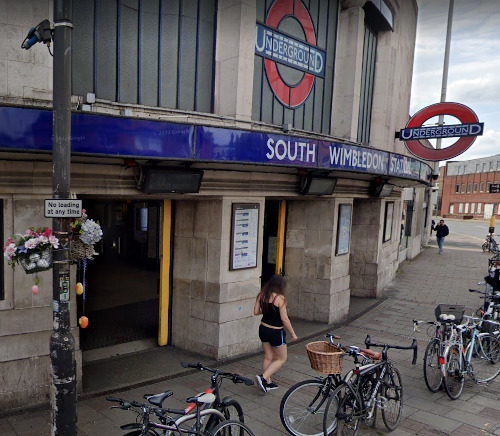 1926 H
1926 H
See Wimbledon.
South Woodford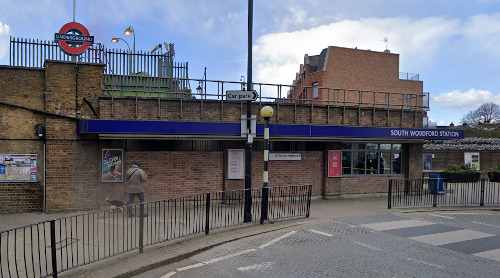 1947
1947
See Woodford.
Stamford Brook 1912
1912
By the stream.
Stanmore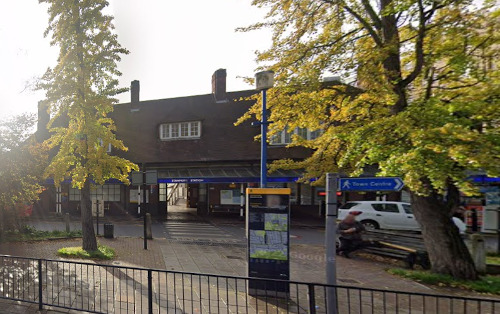 1932
1932
Pond with stones in Old English.
Stepney Green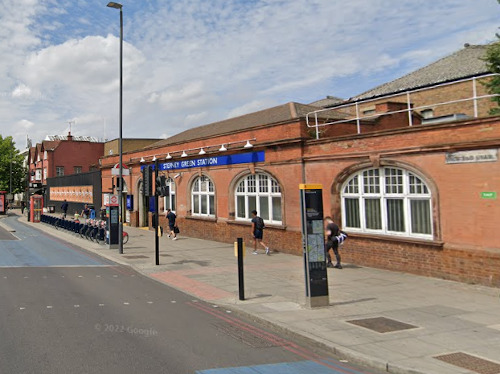 1902
1902
Name Stebbing
Stockwell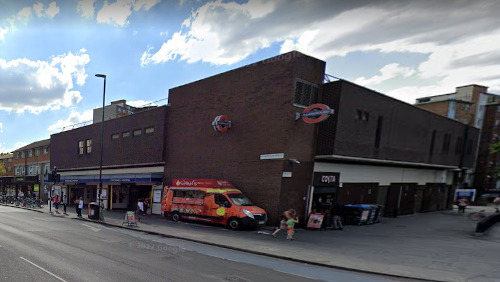 1890
1890
Derived from a stream with a log bridge to cross.
Stonebridge Park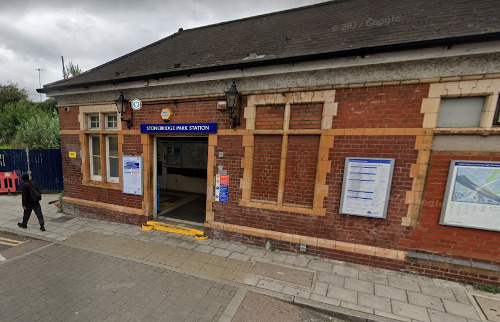 1917
1917
After the bridge which stood on the River Brent.
Stratford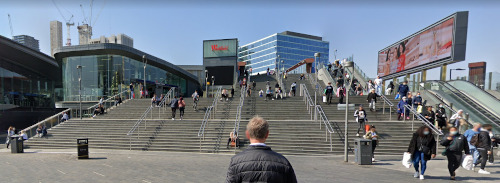 1946
1946
The name of the street in Old English was 'straet'.
Sudbury Hill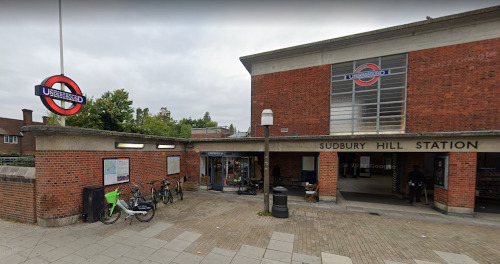 1903 H
1903 H
See next
Sudbury Town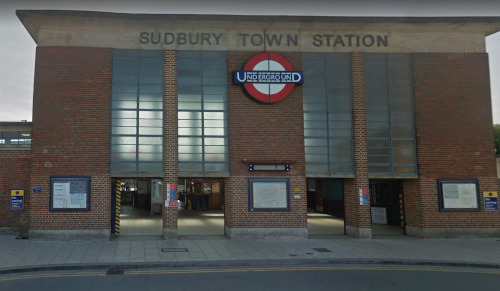 1903 H
1903 H
South Manor.
Swiss Cottage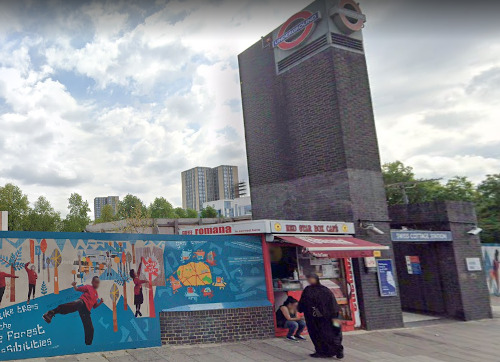 1868 -> 1940 -> 1979
1868 -> 1940 -> 1979
Here was the Swiss Tavern, which later became the Swiss Cottage.
Temple 1870
1870
The name comes from the Knights Templar, but now it is a lawyer's district.
Theydon Bois 1949
1949
Theydon means valley, but the other half of the name comes from a man called Hugh de Bossco.
Tooting Bec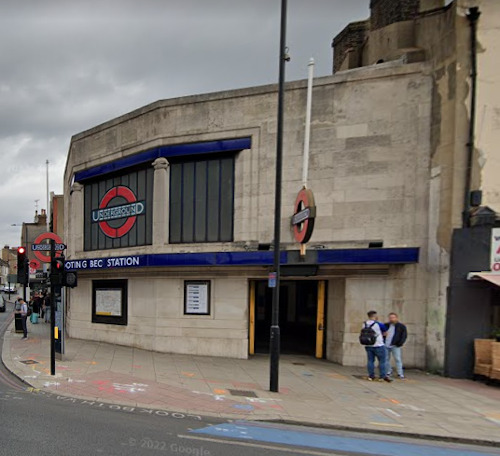 1926 -> 1950 Trinity Road
1926 -> 1950 Trinity Road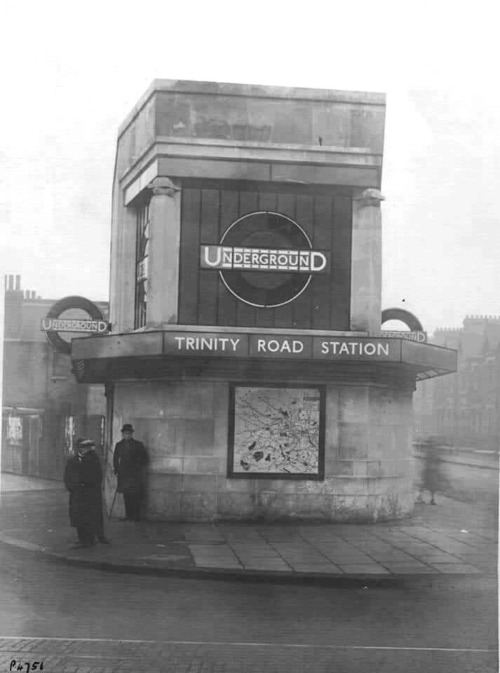 H
H
Tooting is the name of the estate and Bec is Abbey.
Tooting Broadway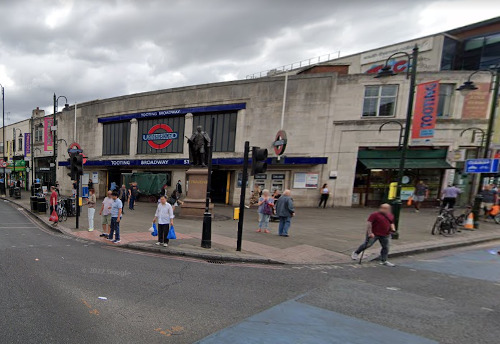 1926 H
1926 H
See Tooting Bec.
Tottenham Court Road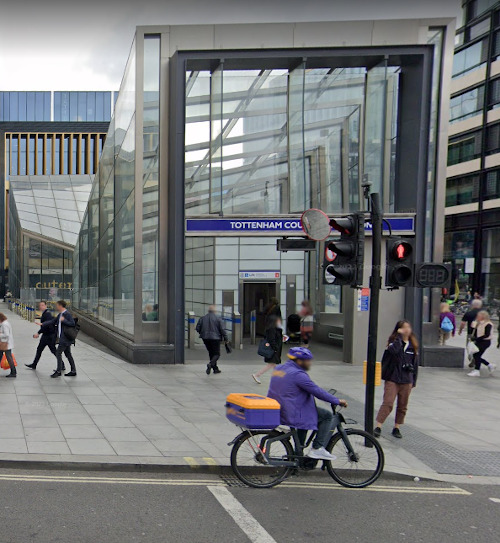 1907 -> 1908 Oxford Street
1907 -> 1908 Oxford Street
According to William de Tottenhall.
Tottenham Hale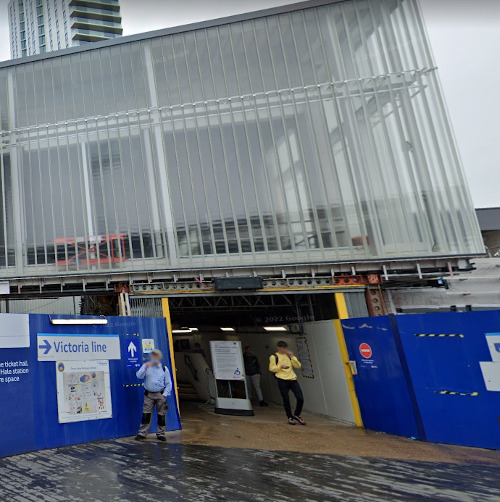 1968
1968
'Hale' means corner of the ground, see also previous.
Totteridge & Whetstone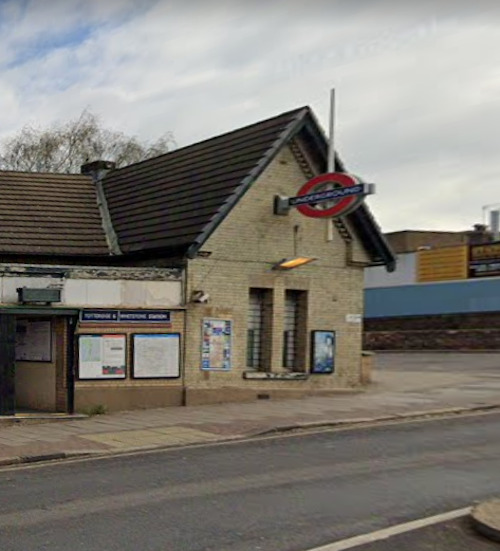 1940
1940
The place where a person named Totta lived and the quarry.
Tower Hill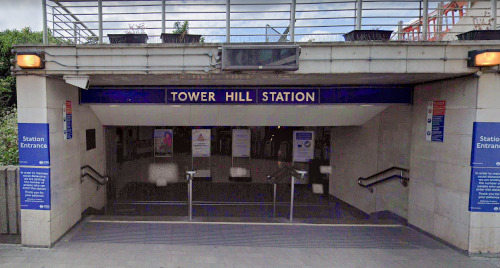 1884 -> 1946 Mark Lane
1884 -> 1946 Mark Lane
After the fort named Tower of London.
Tufnell Park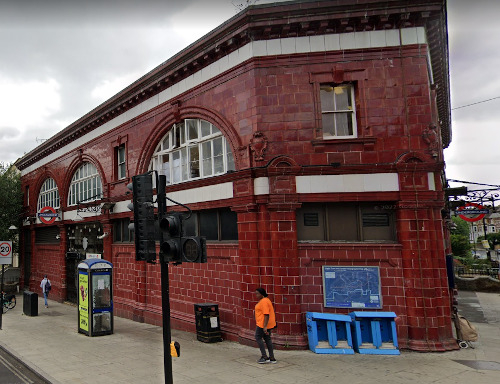 1907 G
1907 G
By William Tufnell.
Turnham Green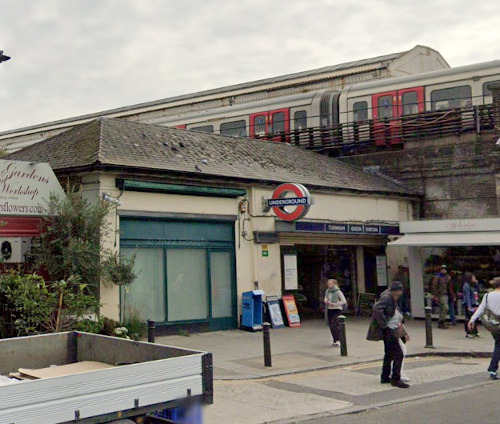 1877 -> 1911
1877 -> 1911
Means Thames Bend.
Upminster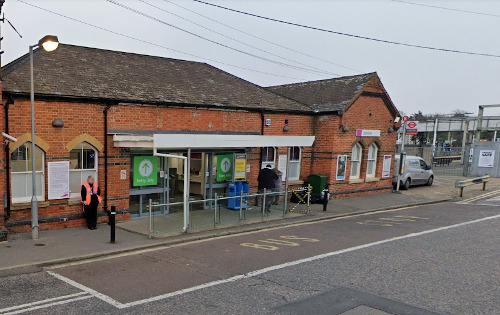 1902
1902
Means the church on the upland.
Upminster Bridge 1934
1934
See previous.
Upney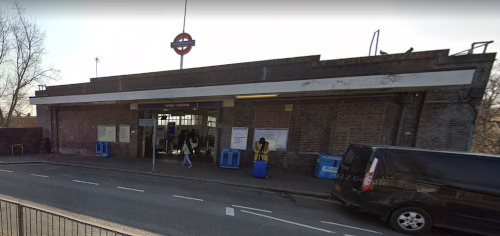 1932
1932
Means upper reaches.
Upton Park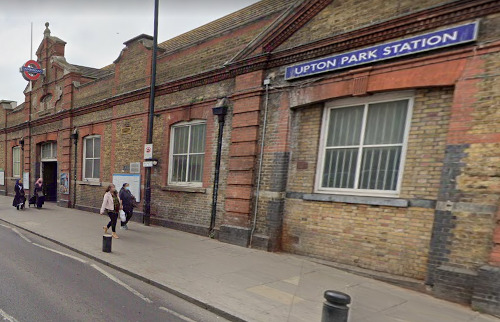 1902
1902
Farm on higher ground.
Uxbridge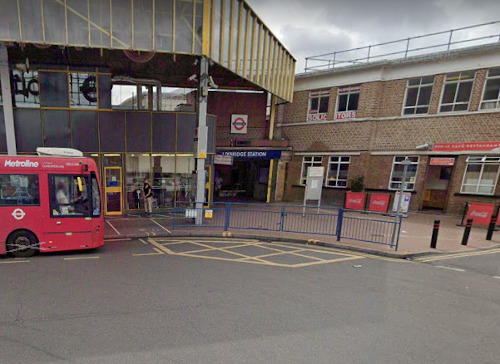 1904 -> 1938 H
1904 -> 1938 H
7th century tribe and bridge.
Vauxhall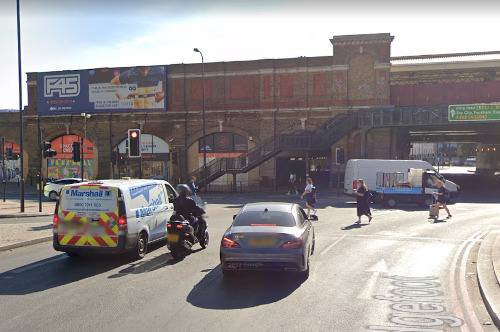 1971
1971
Falkes de Breauté once built a house here, this name is also fixed in Russian as the name of the railway station.
Victoria 1868
1868
In honour of Queen Victoria.
Walthamstow Central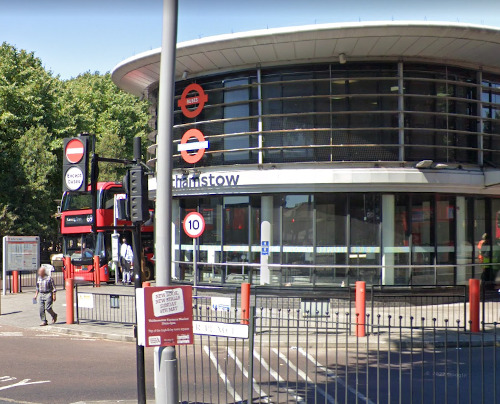 1968
1968
From 'wilcume' and 'stow' - welcome and a holy place.
Wanstead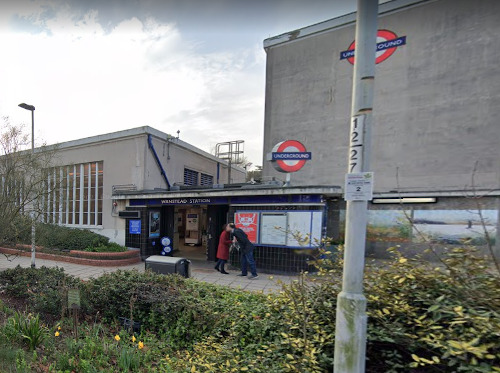 1947 H
1947 H
From the words 'waen' and 'stede' - carriage stand.
Warren Street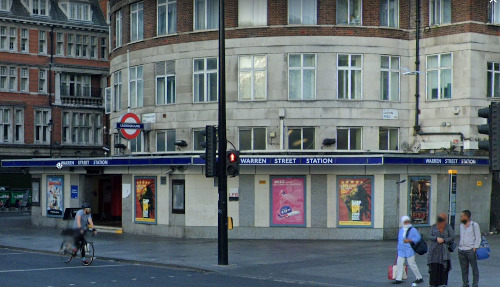 1908 H
1908 H
Maiden name of the wife of landowner Charles Fitzroy.
Warwick Avenue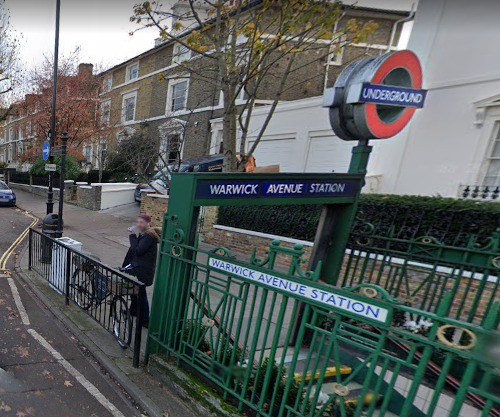 1915
1915
Again the maiden name of the landowner's wife, as with the previous station.
Waterloo 1906 -> 1926 G
1906 -> 1926 G
After the famous battle with Napoleon's forces.
Watford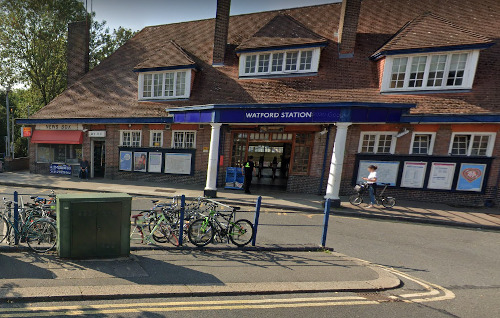 1925
1925
'Wad' means hunt, place of hunters.
Wembley Central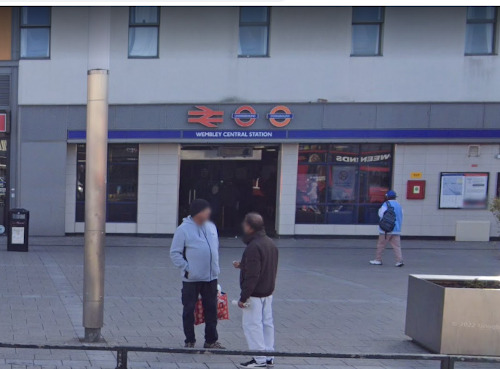 1917 -> 1948
1917 -> 1948
Wembley for Sudbury
Woodland where Wemba lived, in old language.
Wembley Park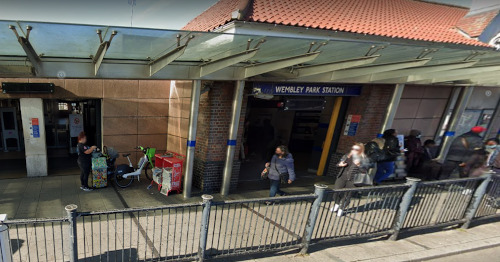 1894
1894
See previous.
West Acton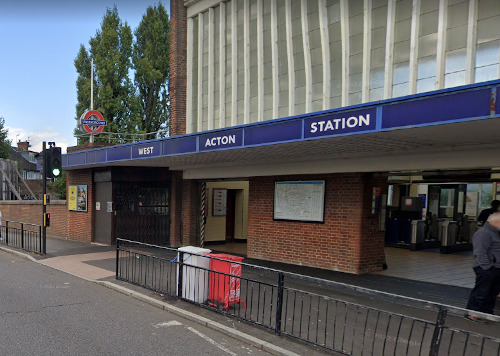 1923
1923
See Acton Town
Westbourne Park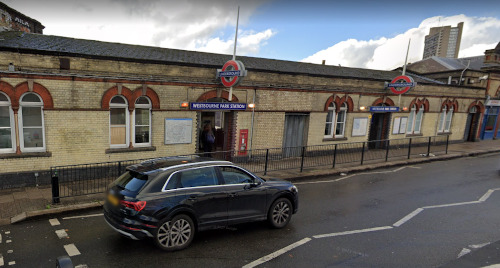 1866
1866
Place west of the stream.
West Brompton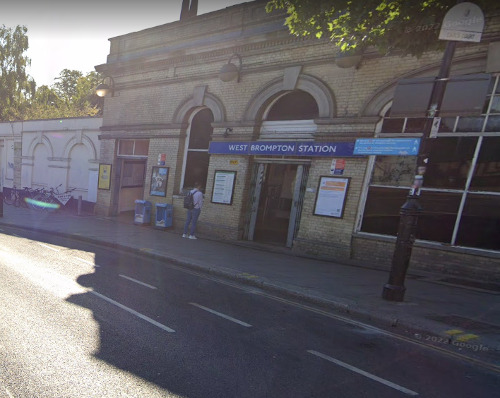 1869
1869
"Broom town" - by flora.
West Finchley 1940
1940
See Finchley Central
West Ham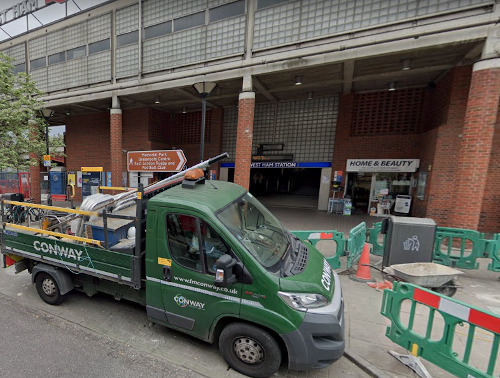 1902
1902
Means marshy river bank, from 'hamm'.
West Hampstead 1879
1879
See Hampstead
West Harrow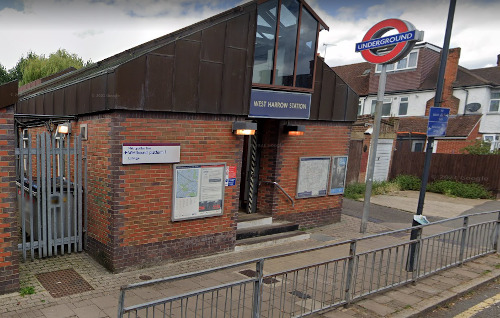 1913
1913
See Harrow-on-the-Hill
West Kensington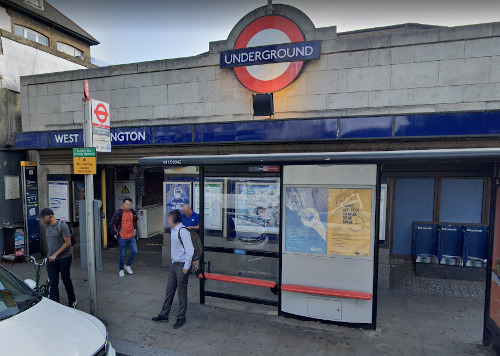 1874 -> 1877 North End H
1874 -> 1877 North End H
See Kensington
Westminster 1868 -> 1907 Westminster Bridge H
1868 -> 1907 Westminster Bridge H
The abbey in the west.
West Ruislip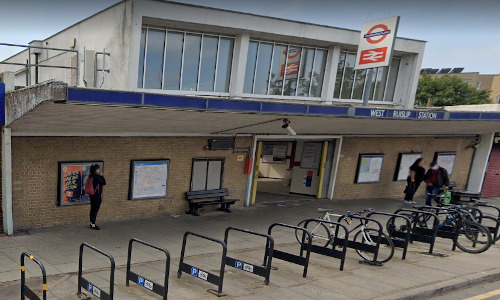 1906 -> 1947 Ruislip & Ickenham
1906 -> 1947 Ruislip & Ickenham
See Ruislip
Whitechapel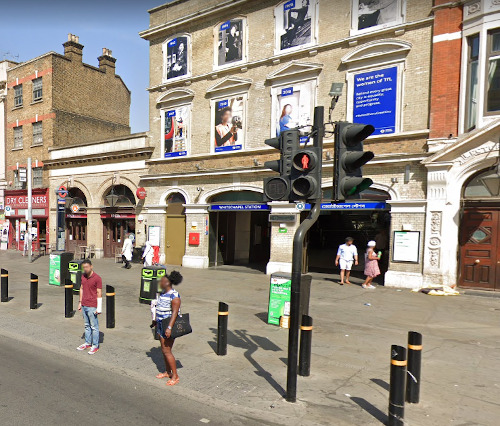 1884
1884
According to the White Stone Chapel (destroyed in 1940).

White City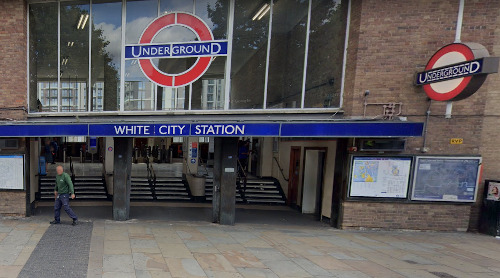 1908 Wood Line
1908 Wood Line
According to the Exhibition Building, which was of white stone.
Willesden Green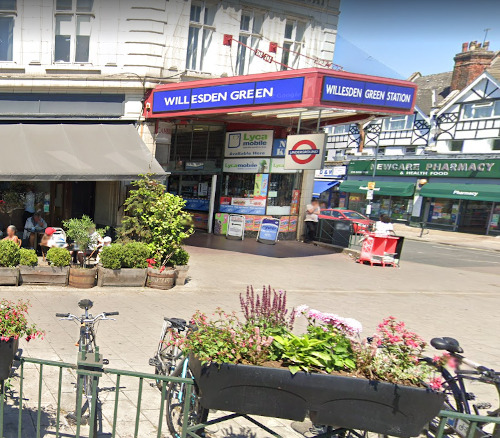 1879
1879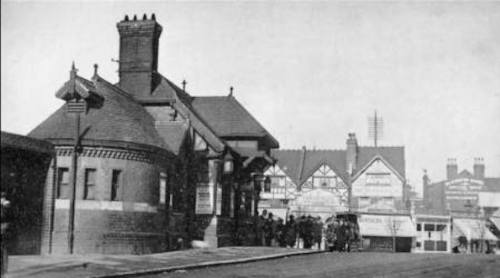
From the words 'wiell' and 'dun' - spring hill.
Willesden Junction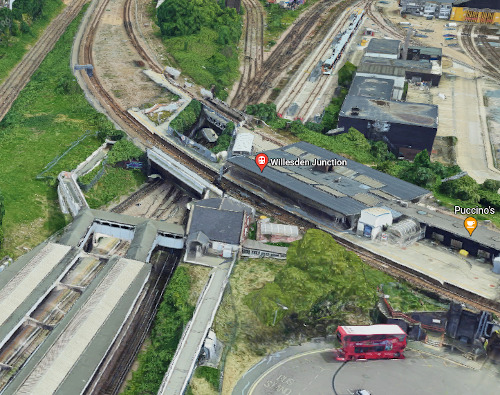 1915
1915
See previous.
Wimbledon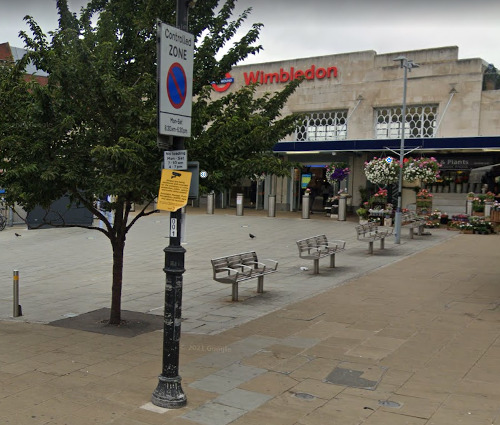 1889
1889
The hill where Winebeald lived.
Wimbledon Park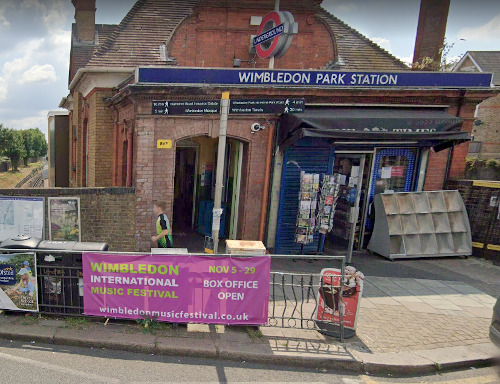 1889
1889
See previous.
Woodford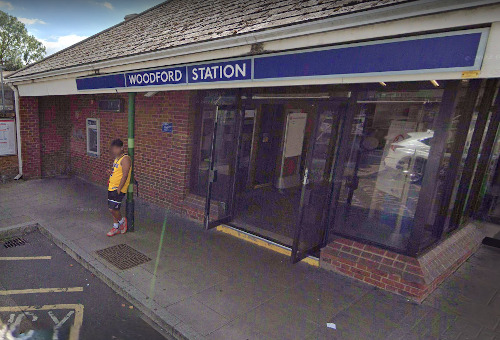 1947
1947
"The ford by a wood"
Wood Green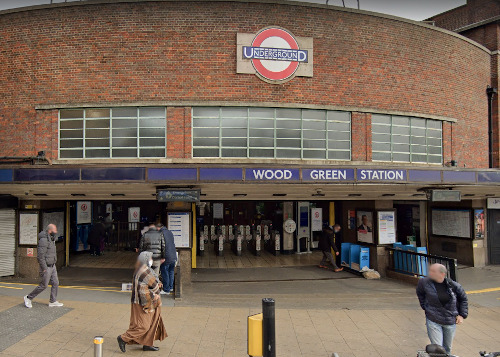 1932 H
1932 H
Farm name.
Wood Lane 2008
2008
Reflects the fact that it is outside the densely populated area of London.
Woodside Park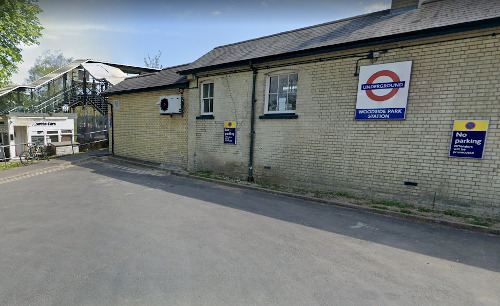 1940
1940
Expresses the proximity of the forest.